






























































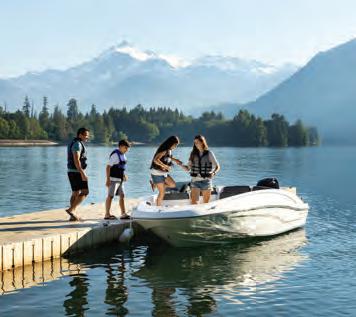
Embarking on the open water is an exhilarating experience, flled with the promise of adventure and relaxation. Whether you’re a seasoned sailor or a weekend cruiser, protecting your vessel with proper insurance is not just a choice—it’s a necessity. Explore the reasons why every boat owner should prioritize boat insurance for a worry-free voyage.


The open water can be unpredictable, with unexpected storms, collisions, or other potential accidents. Boat insurance can give you fnancial protection if there is damage to your vessel, providing coverage for repairs or replacement.
Accidents on the water can result in damage to other boats, docks, or even injuries to passengers. Boat insurance offers liability coverage, which can pay for damages or injuries you’re liable for while boating, up to specifed limits, and lawsuit costs if you’re sued. This includes damage you cause to another watercraft or if someone on or near your boat is injured and you’re found to be legally responsible.
Unfortunately, boat theft and vandalism are realities that boat owners face. Boat insurance has comprehensive and collision coverage that can protect you against events outside of your control, including theft and vandalism.
Accidents on the water may lead to injuries for you or your passengers. Boat insurance offers a range of optional medical payments coverage limits, helping to cover medical expenses if you are in an accident or someone is hurt on your boat, regardless of fault.
If you fnanced the purchase of your boat, most lenders require insurance coverage to protect their investment. Having boat insurance not only fulflls these requirements but also gives you peace of mind knowing that your fnancial interests are safeguarded.
Some water municipalities and marinas may require proof of insurance for docking or accessing certain areas. Boat insurance allows you the fexibility to explore different destinations without worrying about entry restrictions.
Emergency towing and assistance
Progressive boat insurance can include optional Sign & Glide® On-Water Towing coverage. If your boat is disabled or breaks down on the water, Sign & Glide® pays for on-water towing, jump starts, soft un-groundings, and fuel delivery.
Wreckage removal
If your boat sinks, Progressive boat insurance will cover the cost of removing your boat from the water (if removal is legally required).
Investing in boat insurance is not just about protecting a valuable asset; it’s about safeguarding the memories, experiences, and joy that come with your on-water adventures. Don’t let unforeseen circumstances disrupt your journey—navigate with confdence, knowing that Progressive boat insurance has you covered. Ensure a smooth and worry-free voyage, because when it comes to your boat, peace of mind is the ultimate luxury.
Scan to get a quote in as little as 4 minutes
learn more.




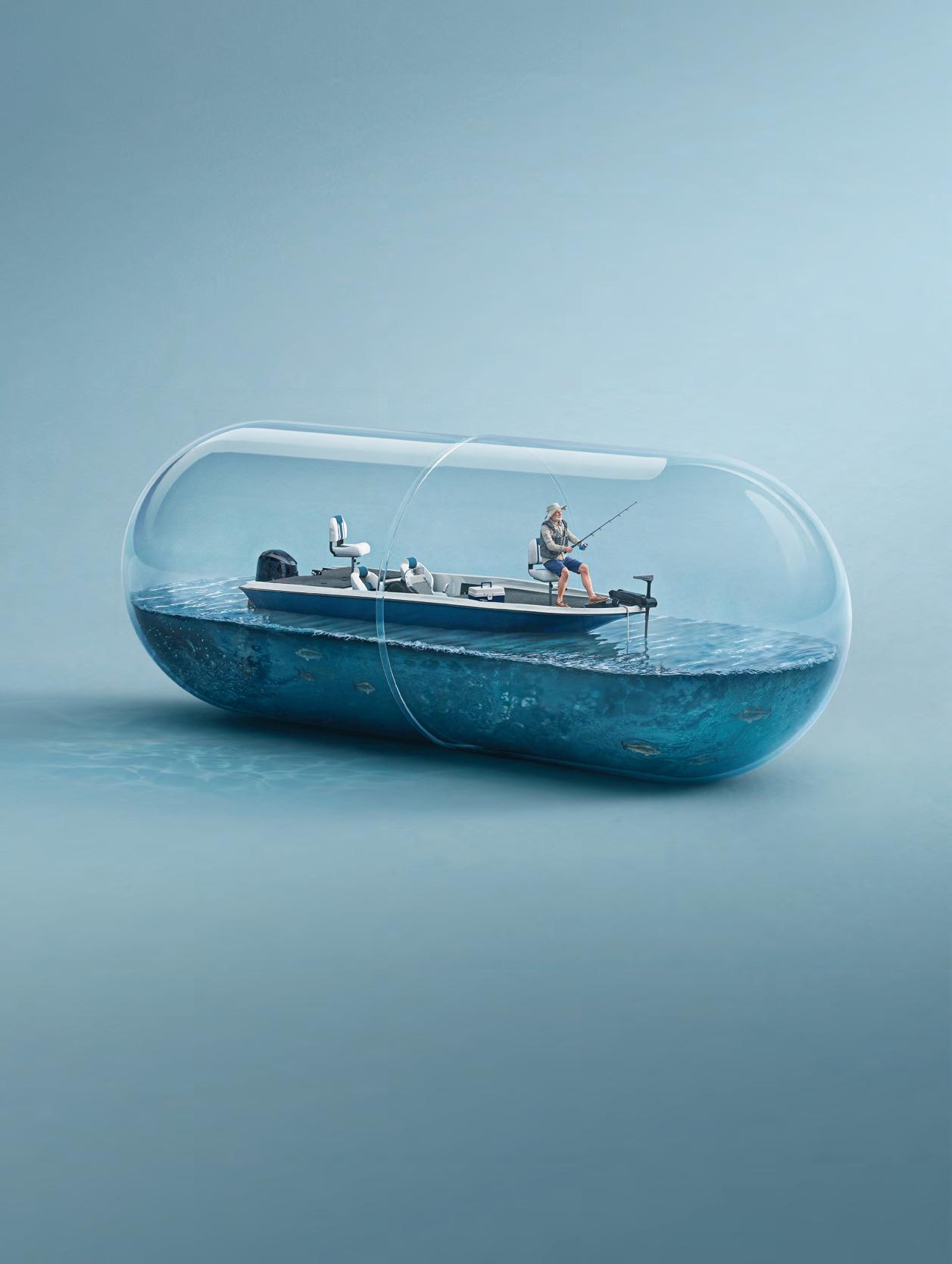


















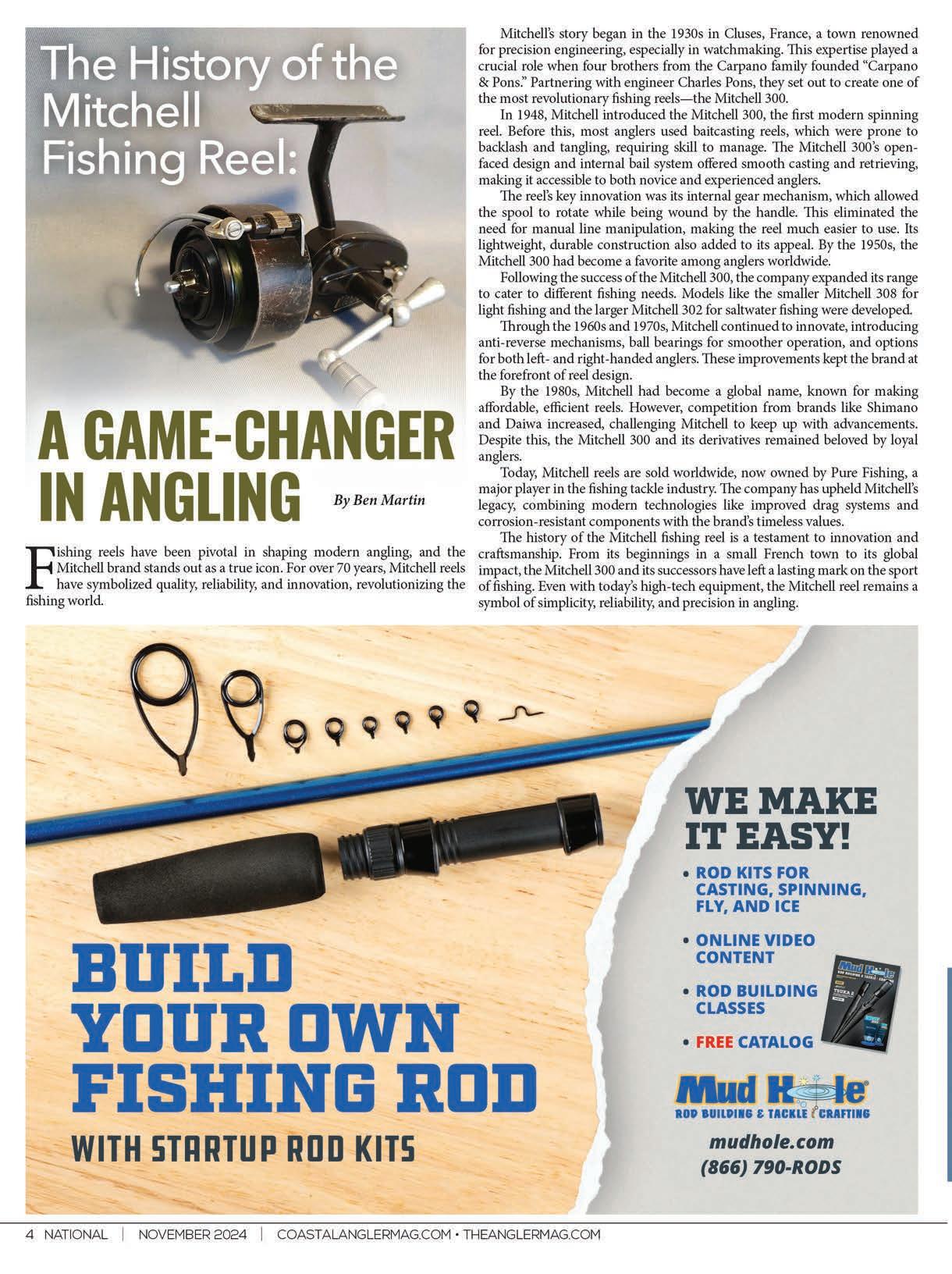
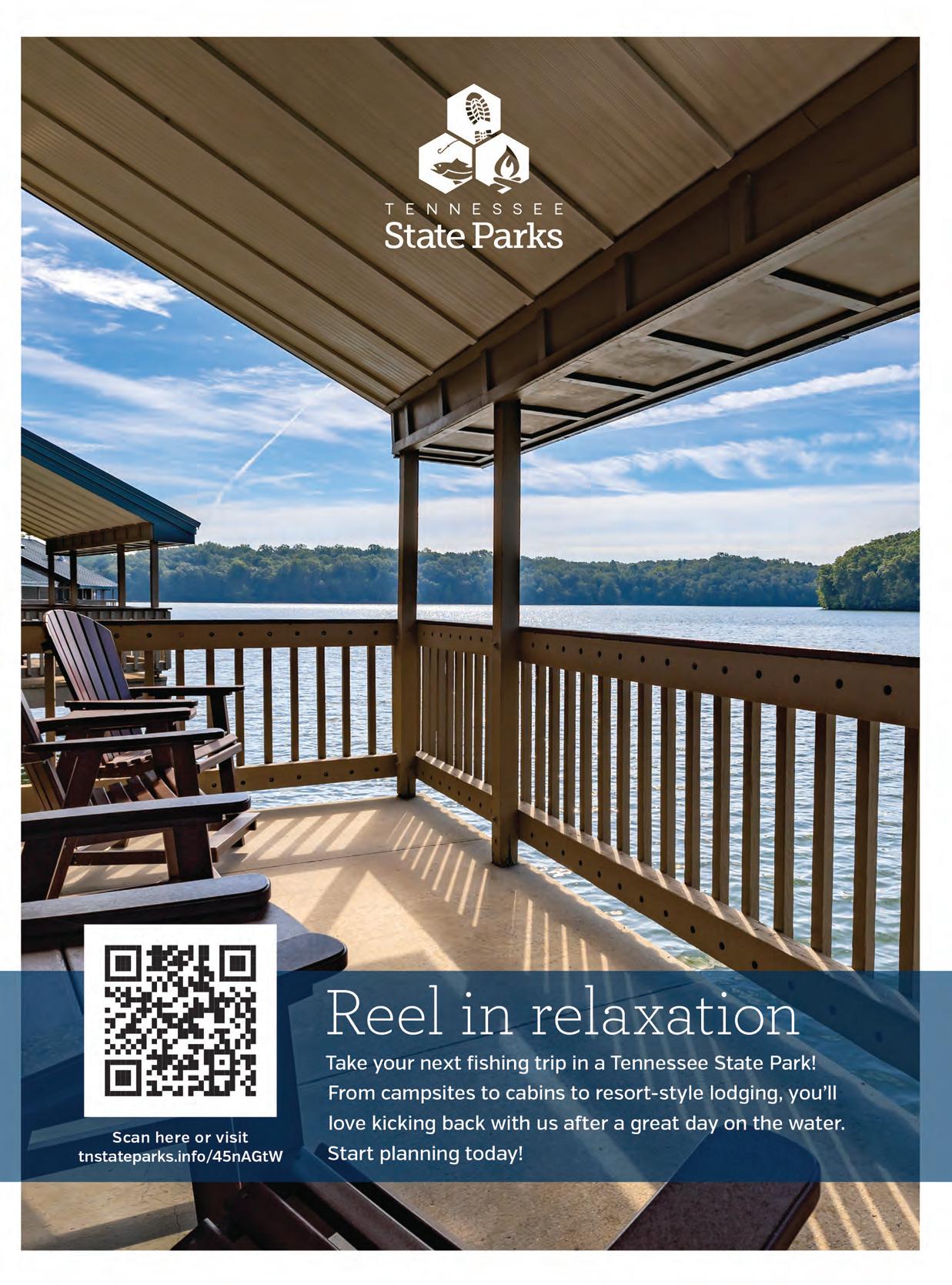

The quest to find the ultimate men’s watch has traditionally been a difficult one in the world of fashion. A timepiece with the perfect look and functionality has long been the goal of both watch designers and enthusiasts alike.
The Renegade Blue Chronograph Men’s Watch is the perfect combination of style and function. With a sleek design that features a bold blue dial, rose gold hands and hour markers, and a durable sports silicone band, this timepiece will instantly elevate any outfit.
The three sub-dials provide a precise timekeeping function. The sports silicone band is durable yet comfortable, providing a secure fit that won’t slide around on your wrist. The band is also easy to clean and maintain, making it perfect for everyday wear. The watch’s 30 Metre Water Resistance rating ensures that it has you covered whatever the occasion.
The Renegade Blue is also built to last, with a sturdy stainless steel caseback and exquisitely detailed bezel. The watch is powered by a super reliable quartz movement, which is covered by our incredible 5 Year Movement Warranty - ensuring accurate timekeeping for many years to come!
At the amazingly low price of just $99 plus S&H, this watch is an absolute steal. Don’t miss out on the chance to own the Renegade Blue and Rose Gold Chronograph Men’s Watch - order yours today!





By Dr. Benjamin Cole
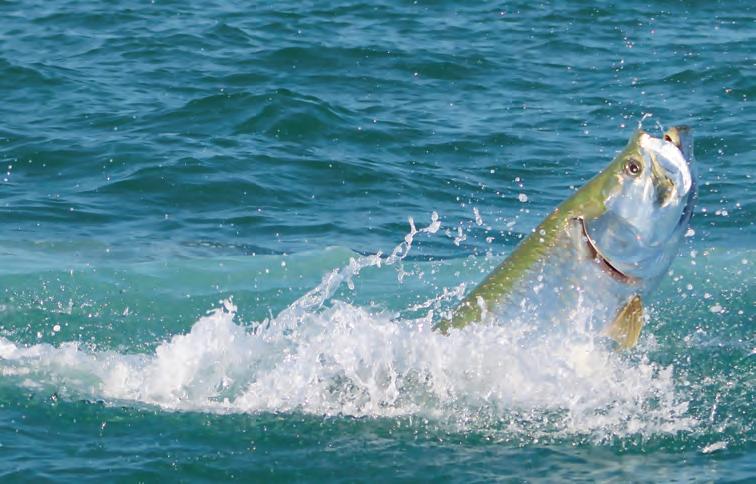
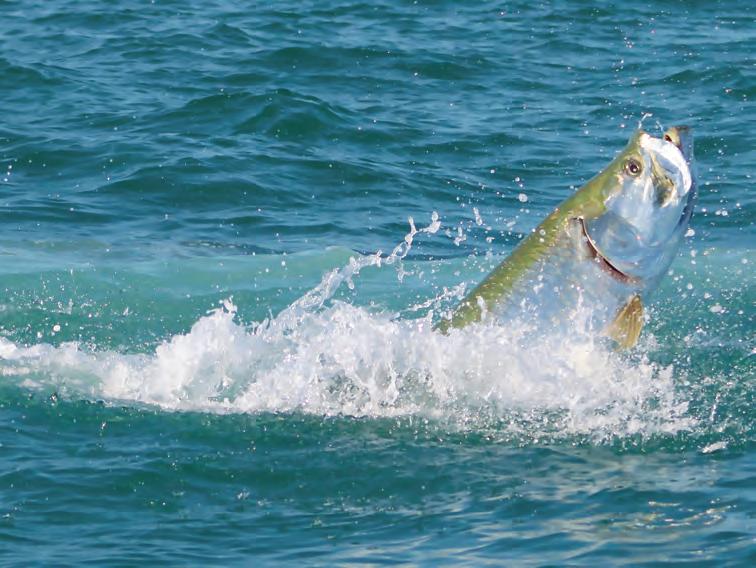
Tarpon (Megalops atlanticus), known as “silver kings,” are renowned for their acrobatic leaps and strength, making them a top target for anglers. However, their fascinating migration patterns also play a crucial role in maintaining marine ecosystems.
Tarpon migration is largely driven by the need for feeding and reproduction. Tese highly
migratory fsh can travel thousands of miles, infuenced by water temperature, food availability, and spawning needs. Preferring temperatures above 72°F (22°C), tarpon move south during colder months, seeking warmer waters.
the U.S. Atlantic coast, they travel from Virginia to Florida and the Caribbean, while in the Gulf, they move from Texas and Louisiana to Mexico. Teir northward migration begins in late spring, driven by rising temperatures and abundant food. By summer, tarpon reach as far as Virginia, signaling the start of fshing season. As fall sets in, they return south to warmer wintering grounds.
A key driver of tarpon migration is spawning, typically occurring between May and September in ofshore areas with strong currents. Afer spawning, larvae are carried into estuarine environments like mangroves and marshes, crucial nurseries for juvenile tarpon. Tese habitats are essential for the species’ survival, but environmental degradation threatens their health.
While tarpon are primarily a catch-andrelease species, improper handling during fshing can lead to mortality. Conservation eforts, including safe fshing practices and habitat protection, are essential for sustaining tarpon populations. Organizations like the Bonefsh & Tarpon Trust work to monitor migration, protect critical habitats, and promote responsible fshing.
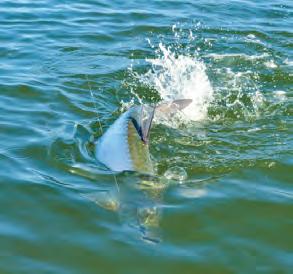
Found in the Atlantic Ocean and Gulf of Mexico, tarpon migration varies by region. Along
Tarpon migration is a remarkable journey, driven by the search for favorable conditions. By protecting these iconic fsh and their habitats, we can ensure their survival and preserve their role in marine ecosystems for future generations.

Capt. Russ Walker

If a fsh can see the bait, they’ll hit it much faster than if they must search through grass or mud. Tat’s why I rig to suspend the bait, keeping it above the bottom where fsh can easily spot it. Grass fats are incredibly productive fshing grounds, and targeting the edges where the fat drops of into deeper water is the key to catching bigger fsh.
In around fve to six feet of water, grass growth stops, forming a natural erosional edge where fsh like trout, cobia, tarpon, and mackerel hunt. Tese edges act like a “superhighway” for predatory fsh. While smaller fsh are found on the fat, the big ones hang near the edge, diving into the deeper channel when necessary.
Te best tool for this fshing method is a fat-topped popping cork. Te cork keeps the bait suspended at the desired depth and makes a popping sound when tugged, drawing fsh to the noise. Tis is especially useful for beginners, as it’s an easy technique that produces great results. With just a few pops, the live shrimp below the cork will jump into plain sight, attracting the fsh.
As a charter captain, I’ve found this method efective for anglers of all experience levels. It’s not uncommon to catch 80 to 100 fsh during a four-hour trip using this rig. It works equally well ofshore near wrecks, suspending bait for species like permit.
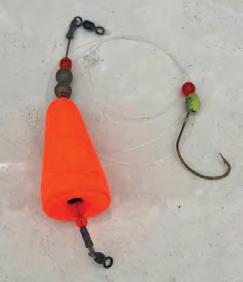
I make my own 200 lb. rated, fat-topped popping bobbers, stronger and shorter than store-bought versions. Tey’re perfect for fshing
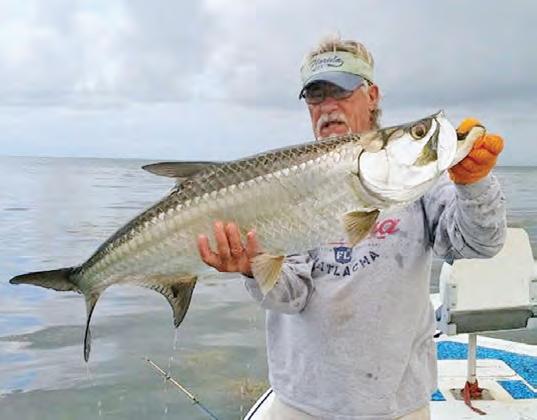
everything from trout to tarpon, with only the hook size and leader changing. Te leader length is always four and one half feet, and the magic depth on the grass-fat edge is fve feet.
Typically, I use a 3/0 Mustad Wide Gap Hook with a 1/4 oz. egg sinker and a 30 lb. fuorocarbon leader. Tis rig works wonders for trout, pompano, mackerel, snook, redfsh, and ladyfsh.
So, give it a try! Pop the cork a few times, remove the slack, and hang on. When the bobber disappears, just “yank it and crank it.” You’ll see your catch increase by at least 40 percent. Fish On!
Capt. Russ Walker is a USCG Masters licensed fshing guide and owner of Tide Walker Charters out of Cape Coral, FL. www.tidewalkercharters.com

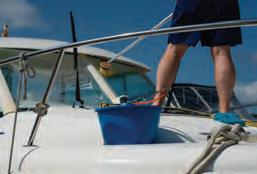
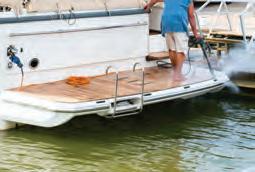
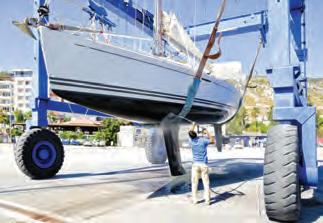










By A. deGruchy
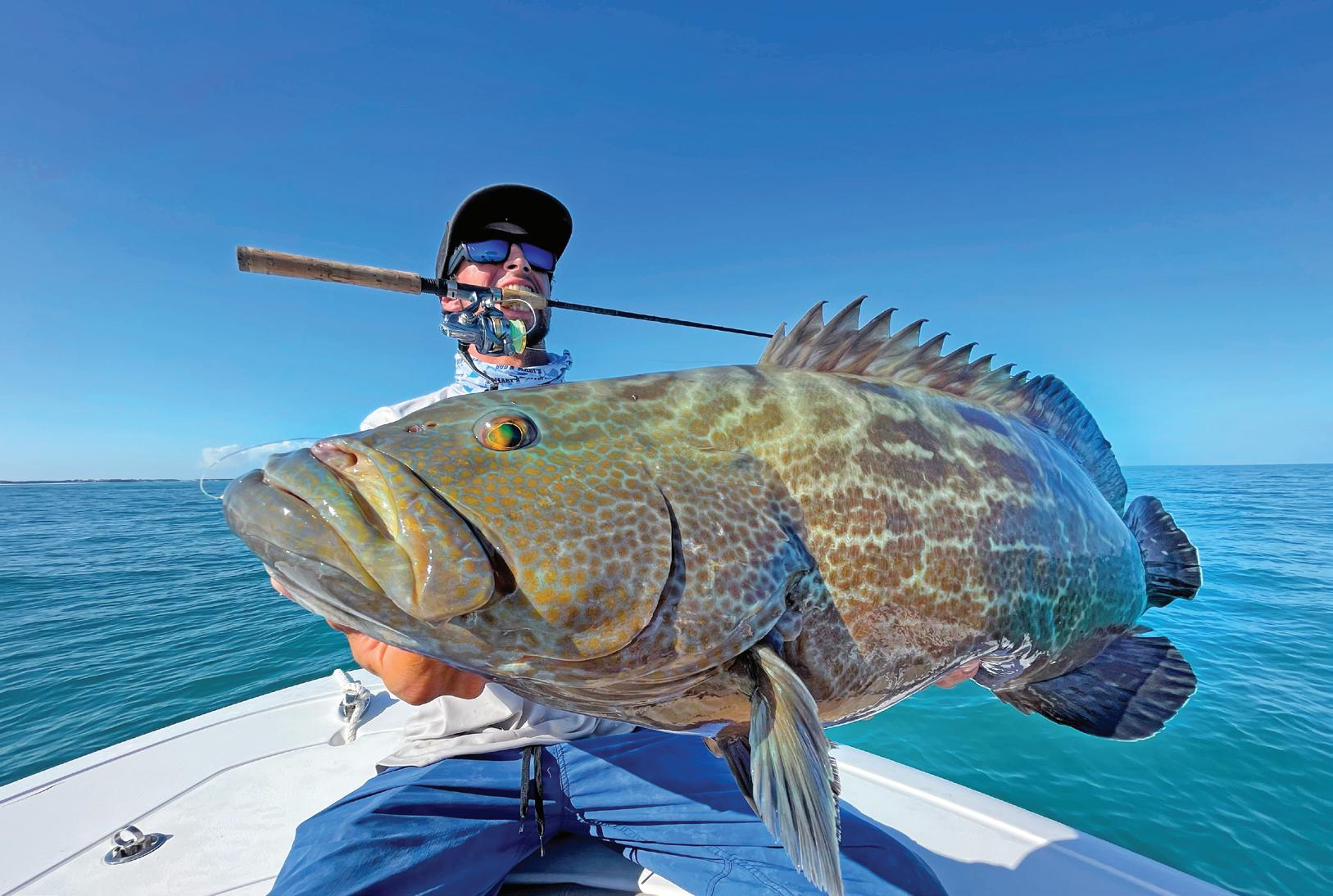
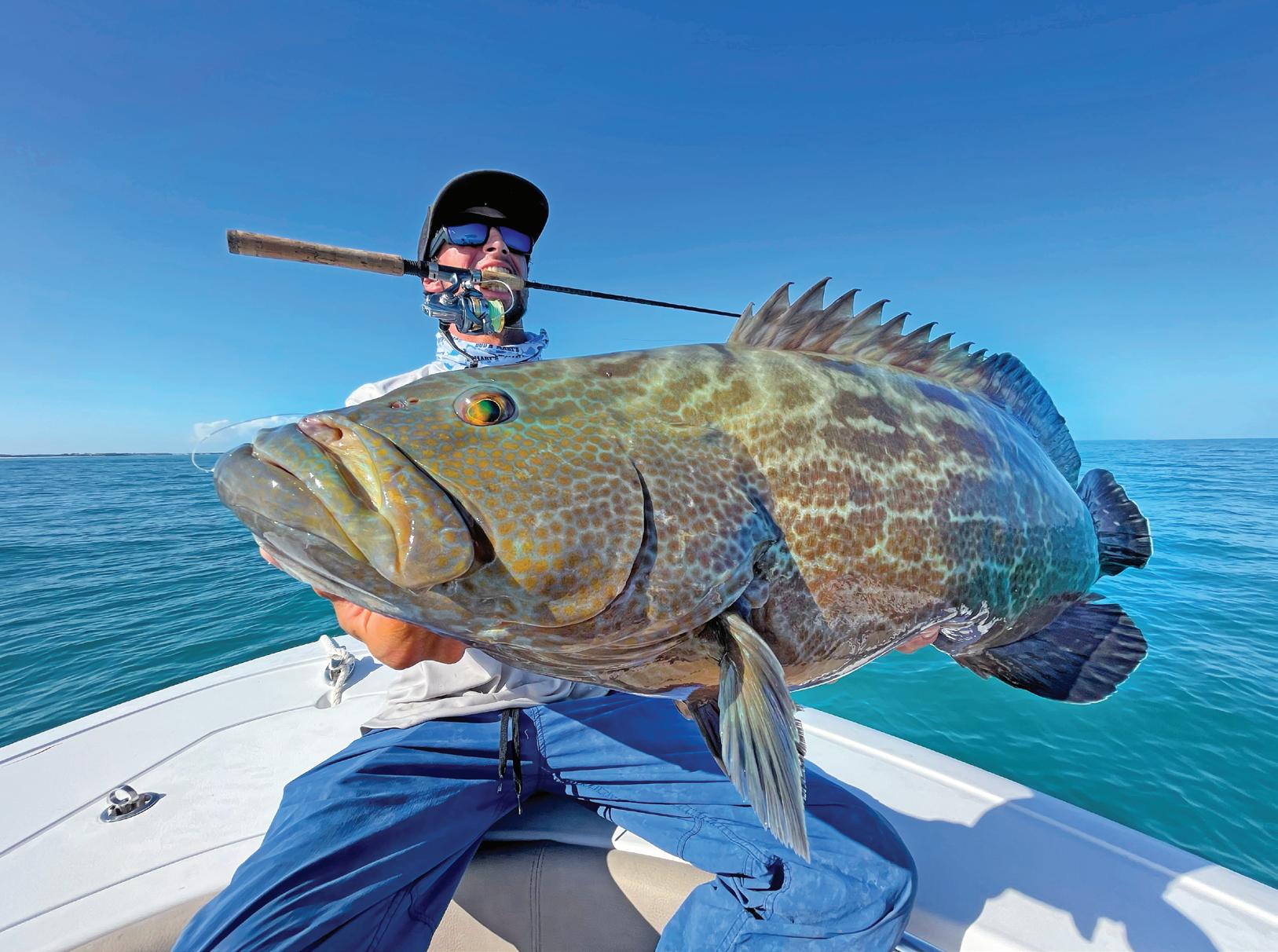
The Florida Keys transform into a fishing paradise as the intense summer hurricane weather fades and cooler fronts begin to roll in. This fall, it’s all about the patch reefs... vibrant underwater gardens teeming with a variety of species. Targeting these patches is incredibly fun and rewarding. You’ll encounter species like snapper and grouper, along with various types of mackerels. Light-action fishing is always a blast,
and in the Keys, there are countless patch reefs to explore.
To find a patch reef, look for shallow spots scattered with coral and sand, typically just a few miles offshore at depths of typically between 1530 feet. For gear, we recommend using a PENN Spinfisher VII 3500-4500 combo. The Mustad 3/0 Demon circle hooks are reliable, and when it comes to bait, live shrimp are unbeatable. It’s all about enjoying the vibes and seeing what you can reel in... mutton snapper, red groupers, porgies, Spanish mackerels, and much more!


This fall will be even more special with the opening of Three Waters Resort in Islamorada. This elegant new destination offers not just stunning accommodations but also brand-new restaurants and a magnificent ambiance. Imagine savoring fresh culinary experiences while soaking up breathtaking waterfront views. After a day on the water, kick back and enjoy a drink at one of the resort’s dining venues or onsite restaurants.
So come on down this fall and get ready for some fun fishing in the Florida Keys. With Three Waters Resort as your home base and Bean Sportfishing Charters as your vessel, you’ll be hooked on the fishing, the food, and the laid-back vibes!
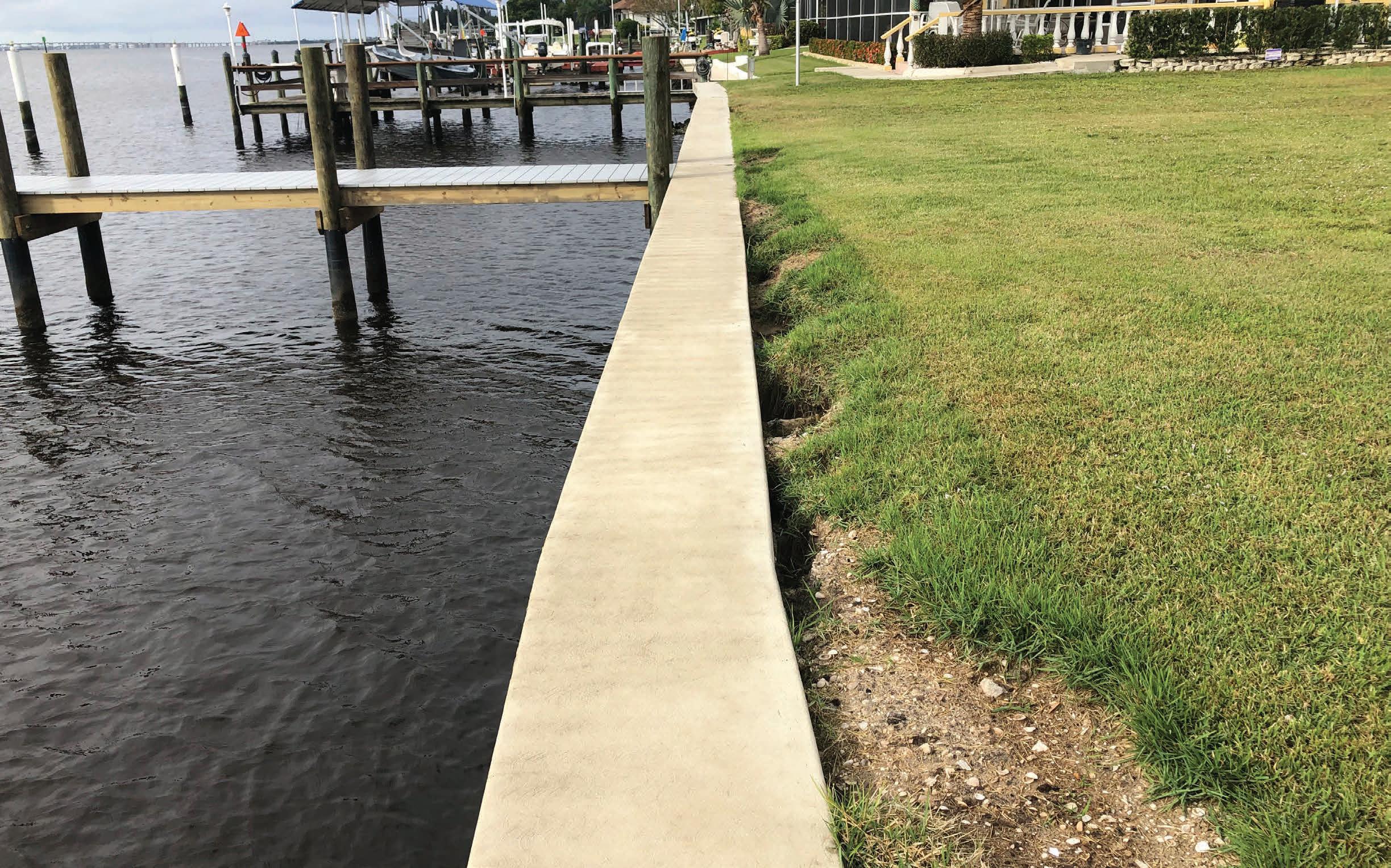


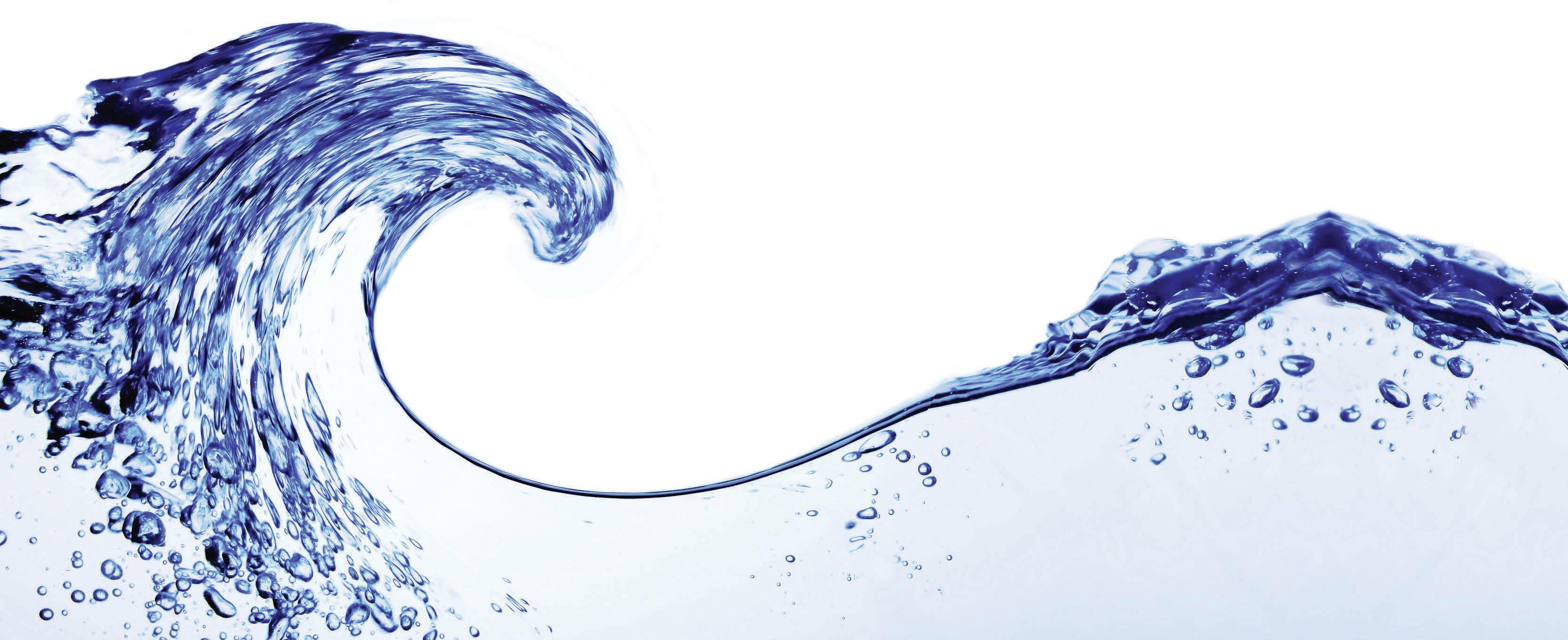



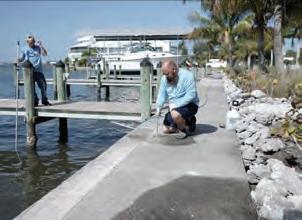













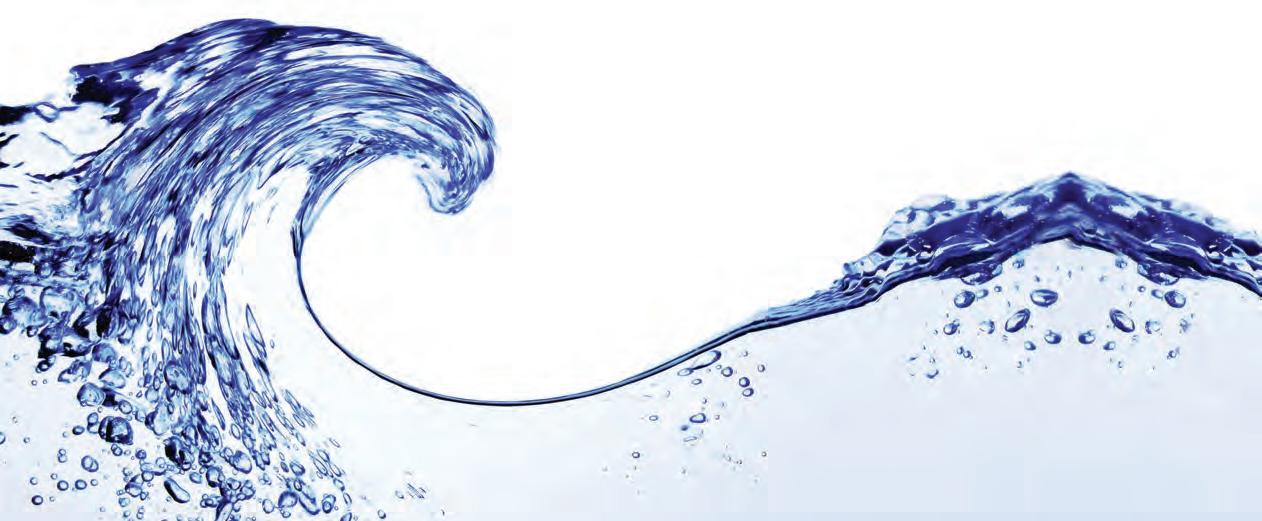
By Capt. Jack Gohmert
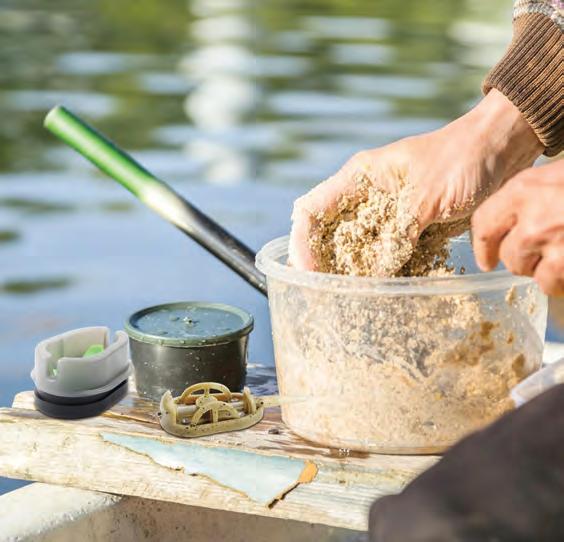
Creating your own chum bait can signifcantly boost your fshing success. Chum, a mixture of fsh parts and attractants, draws fsh to your spot by creating a feeding frenzy. Making your own chum lets you tailor it to the fsh you’re targeting and saves money. Here’s a simple guide to making efective chum and using it for the best results.
Chum is a blend of fsh-based materials that attract predatory fsh. When
placed in water, it forms a scent trail and visual signal that lures fsh like snapper, tuna, and sharks. Whether you fsh ofshore, from a pier, or inshore, chum helps by concentrating fsh around your location.
Making chum is straightforward. You’ll need the following:
Tools:
• Food processor or meat grinder
• Bucket or container
• Rubber gloves
• Freezer bags (for bulk storage)
Ingredients:
• Fish scraps (bait lefovers, carcasses)
• Canned fsh (sardines, mackerel, or tuna)
• Fish oil or menhaden oil
• Breadcrumbs or oats (to bulk up the mix)
• Optional: sand or cornmeal (to sink chum faster)
1. Gather Fish Scraps: Collect lefover fsh scraps or use canned fsh. Local fsh markets are great for sourcing discards.
2. Grind the Ingredients: Use a food processor to grind fsh scraps into a paste. For canned fsh, mash it along with the oil for a strong scent trail.
3. Add Bulk: Mix in breadcrumbs, oats, or cornmeal to bulk up the chum. Tese ingredients absorb oils and create a scent cloud. Sand can help sink the chum.
4. Enhance the Scent: Stir in fsh oil to intensify the scent, making it travel farther underwater.
5. Pack and Freeze: Freeze large batches in bags. When fshing, break of chunks and toss them into the water.
For ofshore fshing, throw small amounts of chum every few minutes to create a steady attractant. For shore or pier fshing, use a chum bag or cage to suspend and slowly release the chum. Adjust the size and consistency of your chum based on the fsh species. Larger fsh prefer coarse chum with chunks, while smaller fsh may respond better to a fne mix that creates a cloud.
Making your own chum is a cost-efective way to improve your fshing. With minimal tools and ingredients, you can craf a bait that attracts fsh and turns a slow day into a successful one.
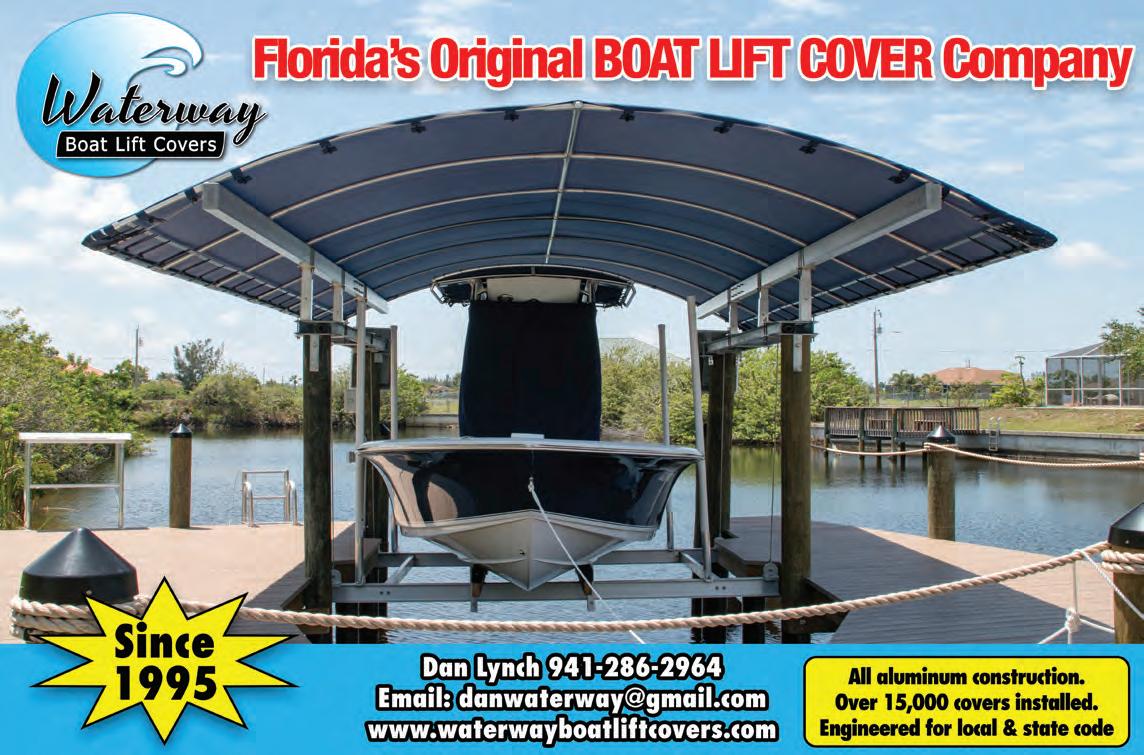
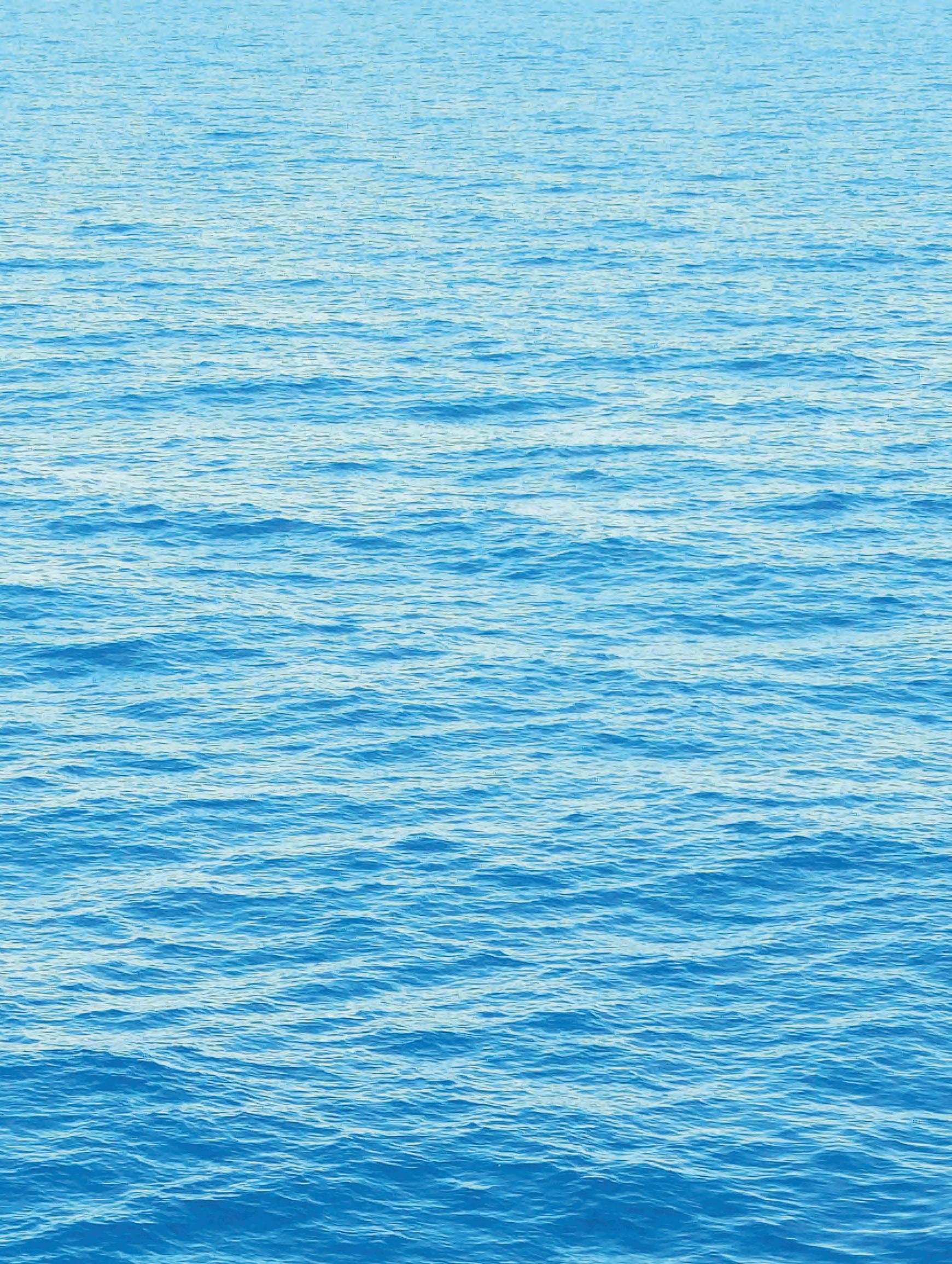

I feel so very, very bad for the victims of the latest hurricanes. I cannot find the words to express how I would feel if I lost my home, all my possessions, my livelihood and maybe my family. I don’t know how I would go on. We live in Dixie County, on the Middle Suwannee. I think that Helene was the hardest blow that I have ever experienced, and I have lived in Florida all my life. We suffered no structural damage to any of our old buildings. We do have fewer trees, and the trees we do have, have fewer branches. There were seven trees on the lines servicing our street and several broken poles. After Helene, we had no electricity for six days. (Thank goodness for the generator. It took care of essentials.). Our Fiber was out for 17 days and our land line is still down. What gorgeous weather we have now after the storms.



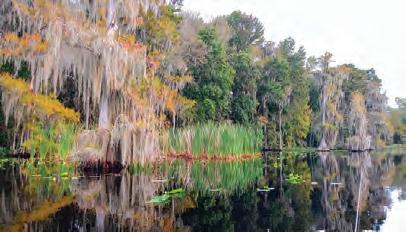
This month’s recipe Shrimp Stuffed Portobello Mushrooms is another family favorite and a pick-up from a couple years ago. It is too good to not enjoy again!
As I write tonight, Cary and I are on our way to Columbia, Tennessee (a little south of Nashville) to join our Buick family and spend a long weekend touring this part of Tennessee, in our beautiful Buicks. We are so grateful to be able to get away for a few days. Due to weather issues, at our house, this is the first Buick tour that we have been able to attend this year. Our Navy grandson Stephen, our granddaughter-in-law Anna and our ninemonth-old great granddaughter Aurora Lynn will join us.

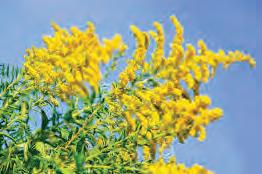
EDITING & PRODUCTION
Lynn Crutchfield
GRAPHIC ARTS & DESIGN
Kathleen Stemley
CONTRIBUTING WRITERS
Dr. Kevin McCarthy Noel Kuhn
Capt. Katie Jo Davis
Capt. Tommy Derringer
Capt. Andrew Fagan
Capt. Tony Johns
Capt. Dallas King
Capt. Brent Woodward CONTACT INFORMATION

I know that you know the storms damaged businesses in our coastal towns and some of my fishing guides have not worked in several weeks. They all need you now more than ever. See page 12 for Captain Tony John’s experience in Helene and photos of Suwannee.
If you have your home, your family and friends and your livelihood, be especially thankful this Thanksgiving. You are blessed.
Lynn Crutchfield Co-Publisher Coastal Angler Magazine of North Central Florida/Nature Coast
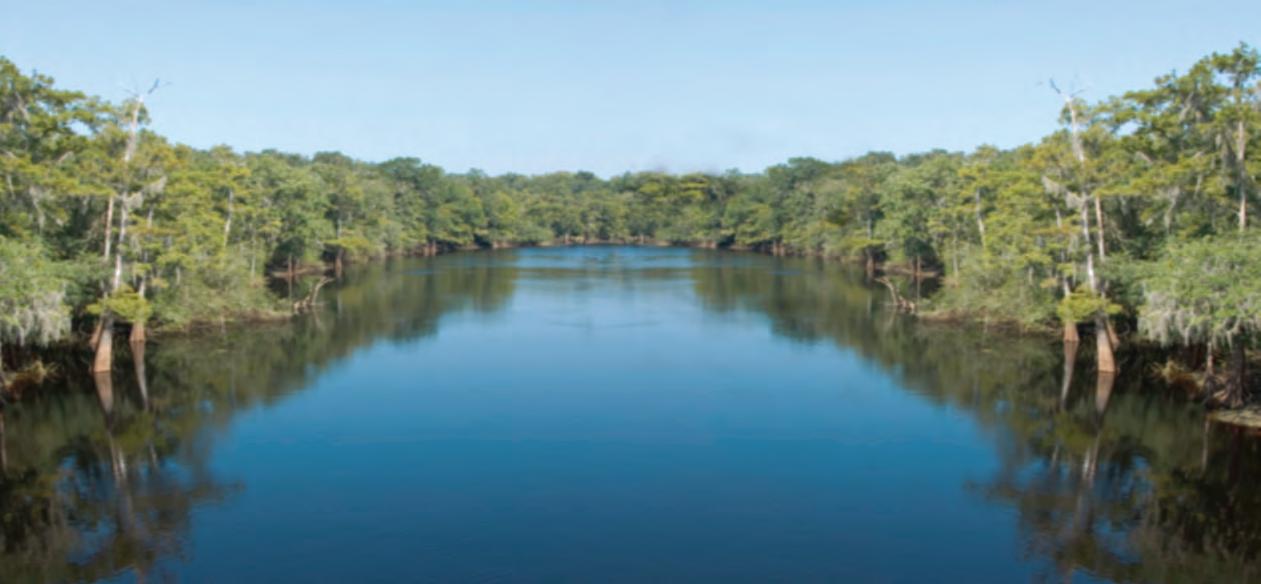
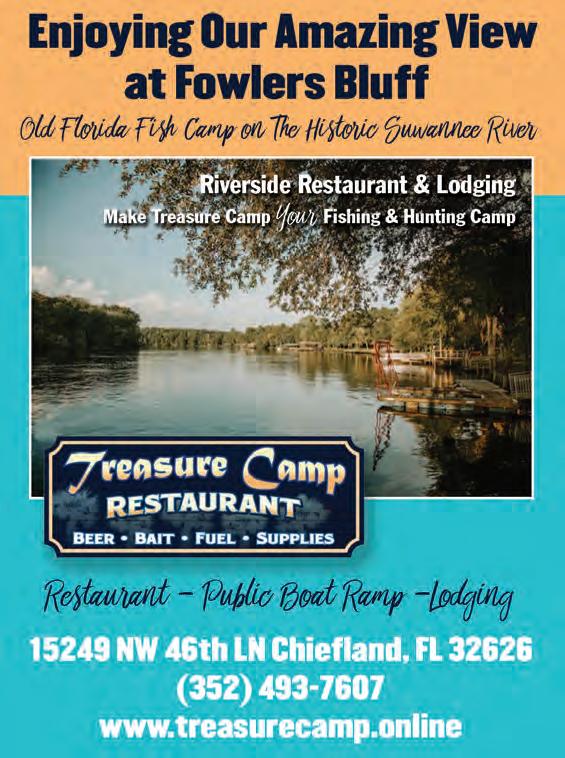


Thank you to The Crab Plant for the shrimp. Visit their Fresh Seafood Market or enjoy Cooked Seafood to go. You are welcome to sit at their table and view beautiful Kings Bay while you enjoy your delicious, freshly prepared meal, watching manatees, dolphins, pelicans and boats. Or, you can carry it home; your choice. Open Tues-Thurs 10:00-5:30, Fri-Sat 10:00-8:00. 201 NW 5th St. Crystal River 352-795-4700.


Lynn Crutchfield, Co-Publisher Coastal Angler Magazine of North Central Florida
Preheat oven to 400 degrees F. Remove stems from mushrooms; chop and set aside. Using a spoon, carefully scrape out the dark gills from the mushrooms and discard. Wipe mushrooms with paper towel. Place in low baking pan, stem side down and brush with oil. Bake 5 to 10 minutes. Remove from oven, and using paper towel, soak up liquid in pan. Set aside.
Melt butter in medium sauté pan. Add onion and mushroom stems and cook on medium until soft. Add the garlic and parsley; continue to cook and stir for a couple of minutes. Remove from heat; add chopped shrimp and red pepper flakes if using, and stir into onion mixture. Mix in cream cheese, Parmesan and bacon.
• 2 large or 6 medium portobello mushrooms
• oil
• 10 extra-large shrimp peeled, deveined and chopped
• 2 tablespoons butter
• 1 small onion finely diced
• 6 cloves garlic finely diced
• 2 strips bacon cooked and crumbled
• 2 ounces cream cheese
• ½ cup grated Parmesan (Don’t use the dry stuff!)
• Handful of chopped fresh parsley
• Pinch of red pepper flakes (optional)
• Panko crumbs
Flip mushroom caps over and overstuff with shrimp mixture. Sprinkle generously with Panko and bake about 10 min. or until Panko is lightly browned. Serve immediately.

OneBy Kevin McCarthy
of the results of hurricanes passing through North Florida, is the flooding of creeks, streams, and rivers. The Suwannee River, for example, is directly affected by heavy rains that fall in the Okefenokee Swamp way up near the origin of the Suwannee in Georgia. Residents much further south all along the Suwannee pay close attention to the amount of rain the Okefenokee receives and act accordingly.
The pictures here are for the most part from the Crutchfield house, owned by Lynn and Cary Crutchfield, copublishers of this regional magazine. Their house is in Dixie County, very close to the Suwannee. When the river does rise dramatically over its banks, residents know that it will take some time for the water to finally get out of their yards, but it will eventually resume its flow south to the Gulf of Mexico.
Floods are actually beneficial to the plants and animals along this and other rivers. For example, the fresh water that pours into the springs and caves all along the river provides nutrients for the many organisms in the springs and caves. Any fish or plant species in such places can easily adapt to the high water. The land animals have enough sense to head for the hills. The water clarity may be severely affected by the infrequent floods, and officials at the parks may close them to swimmers and divers at such times – for the safety of the visitors. Scientists point out that a particular river has a one-in-five chance of flooding in any given year. Smart travelers call ahead or check the web site of a park along the river that they would like to visit.
More recent structures, like the one pictured here during a recent flood,
show how builders wisely build their structures high enough so as to avoid an ordinary flood. Notice how high the houses are in the sixth photograph. They may seem to be high enough away from the water to be safe, but these days houses near the Gulf, ocean, and rivers are very susceptible to rising tides.
Residents in areas that tend to flood have to take precautions. For example, they will park their cars and trucks on high ground and maybe take a boat to their home. They will tie down the picnic table and other such objects to prevent them floating away. When they return home in the dark, they will follow the reflective tape they placed on trees and use a flashlight to carefully make their way to their house. The Crutchfields have averaged about a serious flood about every six years. It seems a small price to pay in order to
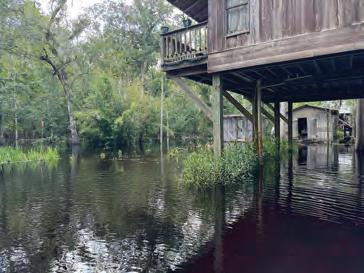
live in such an idyllic place.
Kevin McCarthy, the author of Suwannee River Guidebook (2014 – available at amazon.com) can be reached at ceyhankevin@gmail.com.
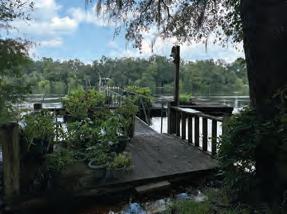
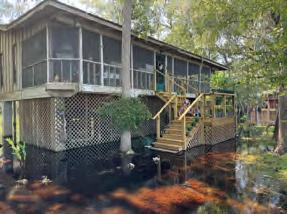
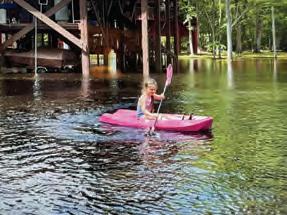
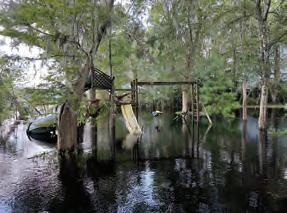



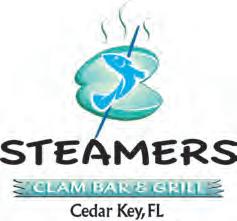








Thecooler months are upon us as we prepare for Winter fishing, so it is time to see major movements from our fish here on the Nature Coast. One of the major changes that occur in November is the switching of the tides. Expect to see negative tides during the day, with our higher tides at night. Strong northeasterly winds with cold fronts have a huge impact on our tide levels. These fronts cool the water temperatures and push our redfish into the mouth of the creeks, and trout onto the shallow grass flats and sandy pot holes.
Near shallow rock piles, expect to find pompano and mangrove snapper eagerly waiting for a shrimp on a jig. Chartreuse in color is my typical go to this time of the year.
Most of our large breeder black drum have moved back offshore, but the smaller, eating size drum are near Rocky Island points and along oyster bars.
Snook will begin moving to the rivers where they search for more consistent water temperatures to

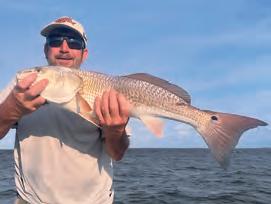


Afterdodging hurricanes last month, I’m looking forward to some true fall weather, cooler mornings with dryer air. I hope all of you made it through those back-to-back storms without too much headache. If you or a loved one need help due to the storms, please reach out to me. We have resources that were donated by my customers, and we are more than happy to lend a hand during the lingering “aftershock” of these hurricanes. Find my number below and don’t hesitate to reach out.
Now, let’s talk November fishing! Water temps drop, a few big low tides and that means it’s mud boat time for this guy! We will run a few mud boat trips in November and more and more into the winter. On lower tides (negative tides especially) the mud boat allows us to creep way into the back country and find fish in deeper holes and pockets that fish are forced into. Reds, snook, trout, black drum, sheepshead and the occasional flounder can be found in the back country. Holes with hard bottom edges are my favorite. Hard bottom stays warmer in the shallow water and then the deep hole gives them an escape when they feel threatened.
Bait choice can get tricky during the mild cold fronts November brings. If we have a colder November with big swings in water temp, it can put a damper on your bite. Finesse baits work wonders in the back country for the artificial guys. Topwater can also drive the redfish and trout crazy when worked properly. I don’t like to fish them too “loud” when I know the fish are shallow and spooky. Slow it down, but keep the bait moving and it should trigger a strike. A bonecolored super spook Jr stays tied on, most of November, on at least one of my rods. Trout fishing really comes to life this time of year for us as well. The classic Little John, or a shrimp on a jig head, will get the trout chewing, more times than not. Finding the pattern the trout are on, will increase how many bites you get in a day. Fast or slow retrieve, and what kind of bottom they’re relating to that day can put more in the boat. Trout, is hands down, one of my favorite fish

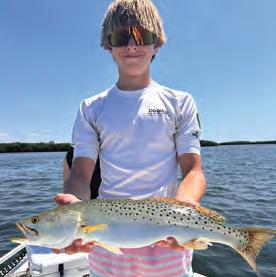
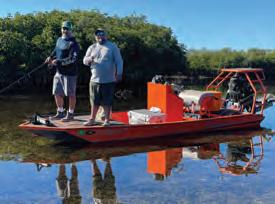
to eat, especially fried in a flour and panko mix 50/50. But remember, if we want to keep eating them, we have to keep the population healthy! Release the big girls and let them keep reproducing! Practice safe handling techniques when you can to help insure life after release. Hope you all have a great November!



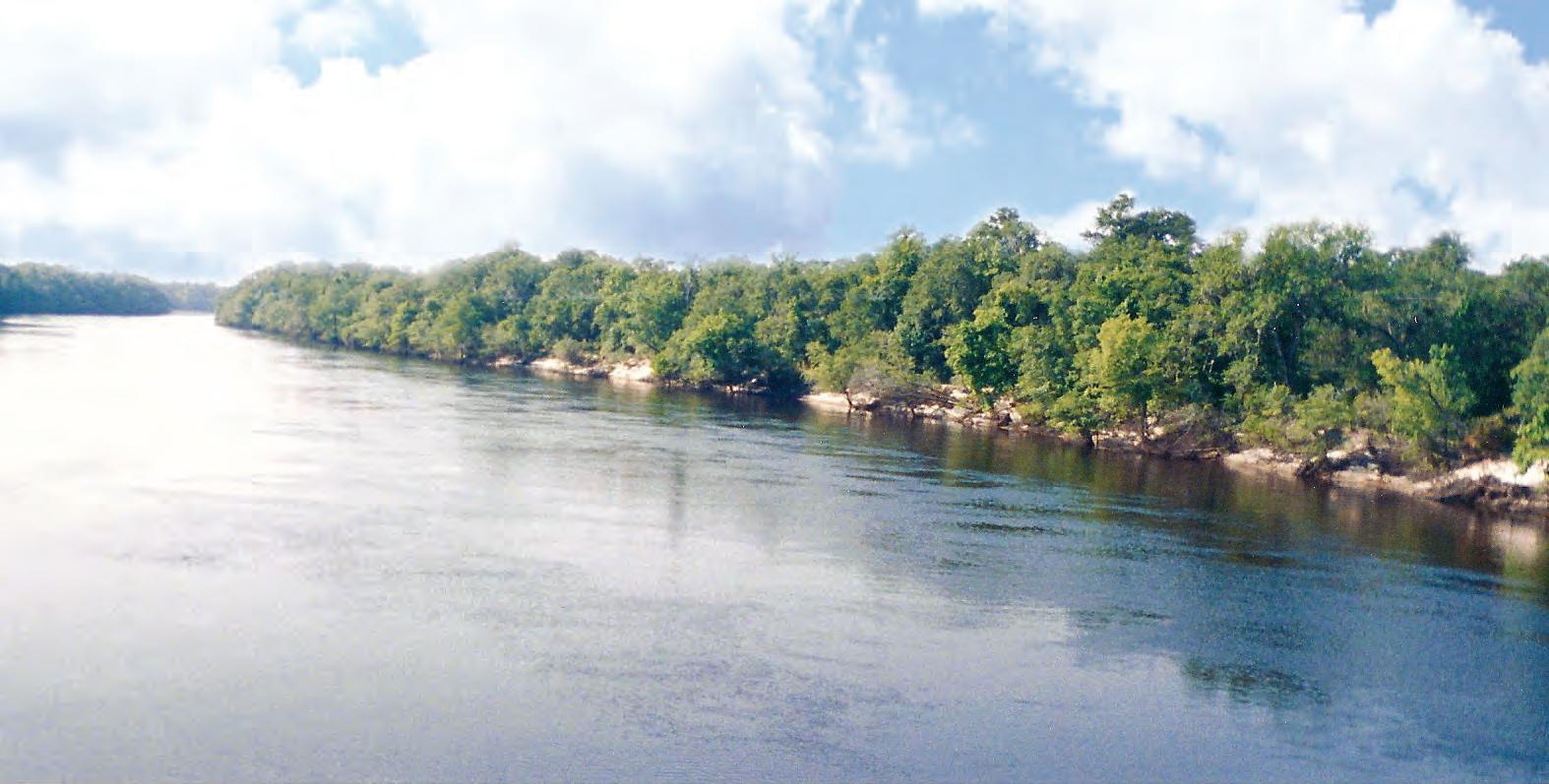
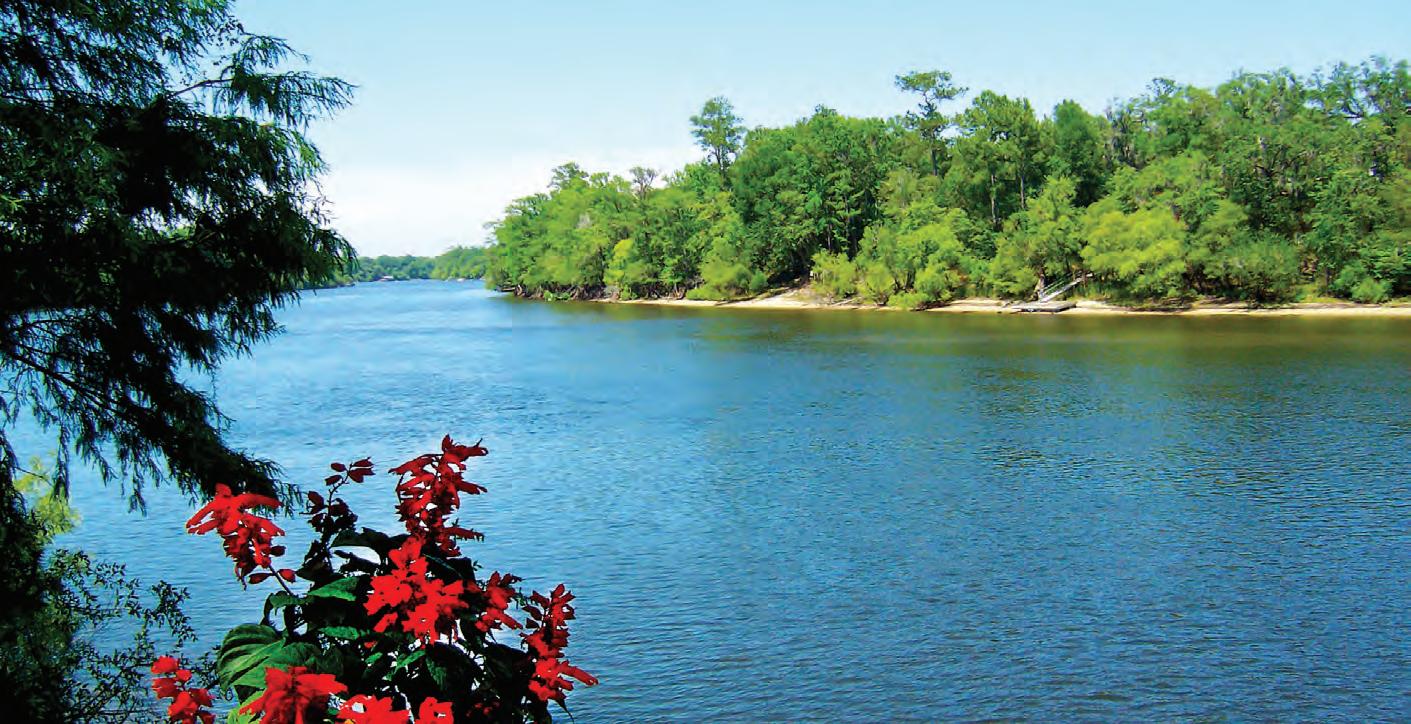





Weather the storm! That’s the theme for this month’s chapter of Coastal Angler. So, so many people have been affected in our area this past month by hurricanes Helene and Milton, so fishing has been a little spaced out, only one to two times a week this month, as we as a team of anglers and fisherman, feel guilty fishing while others need help. Our coast has been damaged in ways that has never been seen before. We are just trying to clean it up the best we can and get tourists and recreational activities and hotels back in working order, so we can get back to SOME level of normalcy.
Inshore, the redfish, trout and puppy drum bite has been nearly exceptional. Shrimp mudminnows and cut mullet have been the go-to for all of these species, with shrimp reigning supreme. The other bonus we have had this year has been a fantastic run of white shrimp, something I haven’t seen since I was a child. So, cast netting a five-gallon bucket in just a few casts for a stellar bonus to the cooler has been a regular.
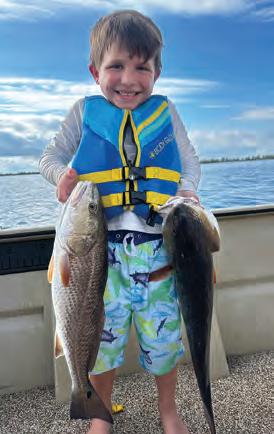

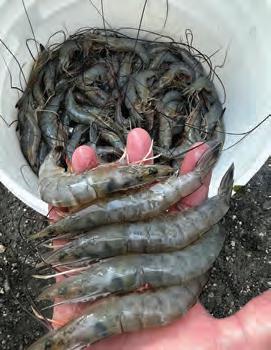
Offshore, the mangrove snapper bite in 30 to 40 feet, couldn’t get much better. Freelining a live shrimp on a 1/8 oz jug has proven to be the ticket. The hogfish bite has been pretty decent, and I expect November to be on fire. A simple 1oz knocked rig and a 3/0 circle hook tends to get the job done for these tasty critters.
One more tip, if you’re on the water in the next few months, bring a trash bag and pickup any trash you see. We can all make a big difference!
Good luck and tight lines.
Ebb Tide Guide Service Capt. Andrew Fagan 3528188927
Instagram : @capt_redfishdrew
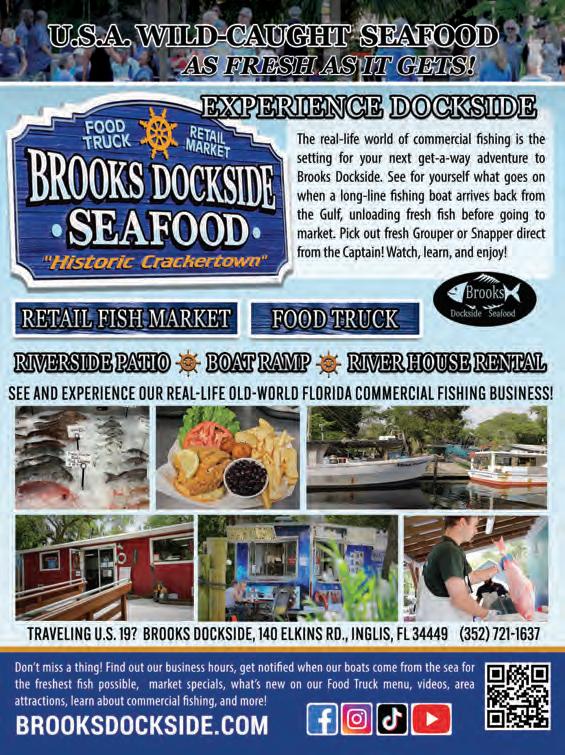


Things will be never be the same again!
Hurricane Helene was the third hurricane to hit the Florida Big Bend Region in 13 months. Last year it was Hurricane Idalia that came through, with record storm surge and damage to the coastal communities. Then earlier this year, it was Hurricane Debbie. What we didn't know at that time, was that this hurricane was just to soften us up for the BIG one that was coming!
Nowadays, we get information on these hurricanes before they ever form, sometimes I think I would rather not know so much so soon, but that does give us time to prepare! This time for me was different; this time I moved things I had not moved in the past. I had that “feeling” that something wasn't right and that this storm was going to be big. I just didn't realize how big.
In Suwannee, this storm was much drier, as far as rain, than the ones in the past. I have been here for all the storms in the last 40 plus years. With so much info, I was prepared for Helene to come in sooner than it did, but when it did get here, the water began to rise quickly! While I choose to stay in the area, I am always mobile. This time, as I moved ahead of the water, it was coming in faster than I had ever seen, rising quickly to cover the roads at Munden Creek, closest to the creek.
It wasn't long before the water was flowing down Munden Creek road, heading towards the highway! The water quickly exceeded the level of Idalia 13 months earlier. Idalia had set records up and down the coast and caused historical damage, but now we were seeing a storm that was bringing a
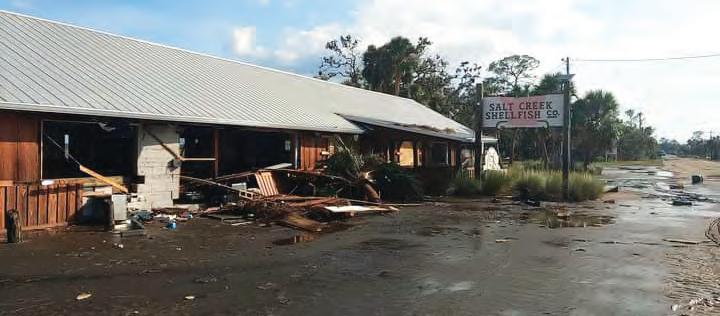

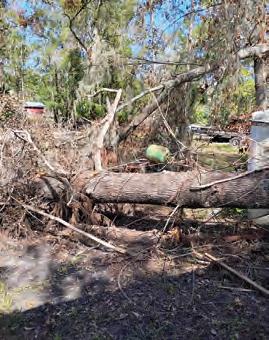
much higher storm surge that would devastate communities like Horseshoe Beach and Keaton Beach, while doing severe damage to Cedar Key, Suwannee and Steinhatchee.
I have heard some say this storm was a once in a generation, but I say it's a once in multiple generations storm, because I have to go back to my great grandfather, who was 11 in 1896, when the Cedar Key Hurricane occurred. This is the Storm that was used to establish the 100-year flood plain in our area. Unofficially, from what I have seen, we were very close to that
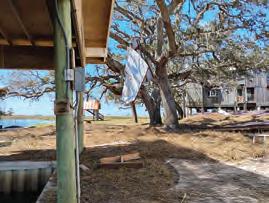

level in Hurricane Helene. All of the highest points in Suwannee were flooded, something I was told probably wouldn't ever happen! As the water continued to rise, I moved to the storage building next to the new boat storage yard. That is where I had moved some of my stuff, plus my tractor and two of my boats. It wasn't long before the boat storage area was flooded and I wasn't sure if the storage building would be safe, so I moved again. This time, to the curve on the way out of town. Now the water is rapidly flowing in the ditches going out of town! The water continued to rise and eventually crested about 75 yards past the brown house! For me, I had over ten feet of water on my property, with six feet in my house. I also had multiple large trees down with signs of a tornado that didn't touch down. I will rebuild, but things will Never Be The Same!
Captain Tony Johns | 352-221-2510 www.lowersuwanneriverfishing.com Instagram: captaintonyjohns Facebook: Lower Suwannee River Fishing Adventures


Hey guys and gals. Hope everybody is staying safe and made it through the storm safely. It was a definite rough go, but we will keep on trucking and keep on fishing and hunting.
Obviously after the storm, everybody canceled, so I don’t have a lot of pictures of recent catches. But at this point, fishing should be an amazing day on the water. Trout and redfish should be preparing for their winter-time hideouts and eating anything you want to throw. Hunting season is upon us as well, and my wife had a great start to the bow season with an old “9 point”. I’m starting to see some birds, so on that note, if you want to get on the books, we would love to get y’all on the water. Be careful when you do decide to hit the water. A lot has changed out there and a lot has moved or popped up.

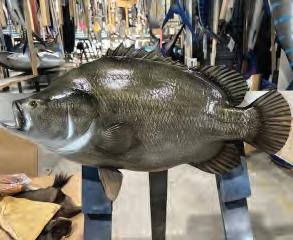
Hope everybody has a good Thanksgiving.
Until next time keep it Reel Native!
ReelNativeFishing.com 352-284-5514
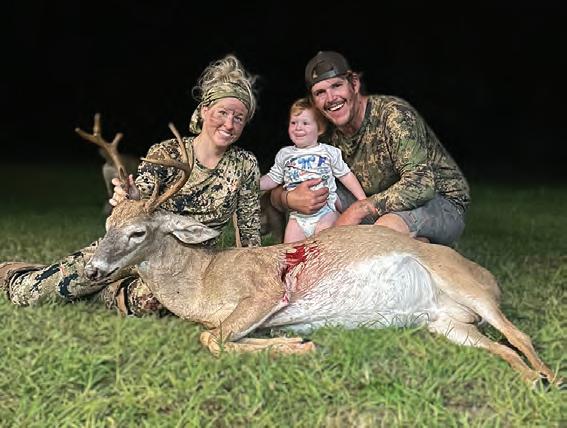


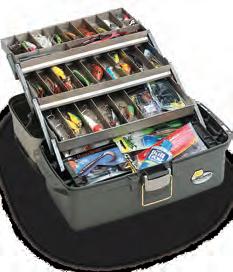


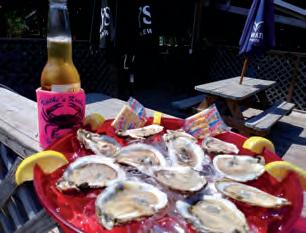


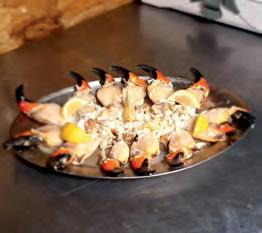
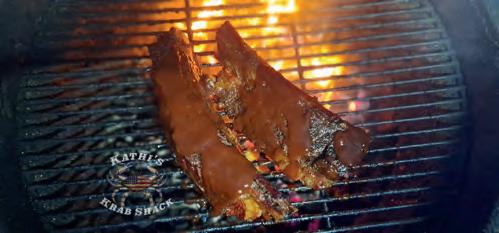
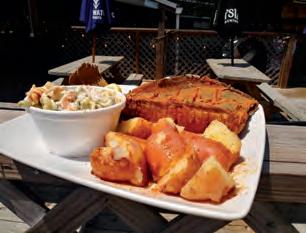
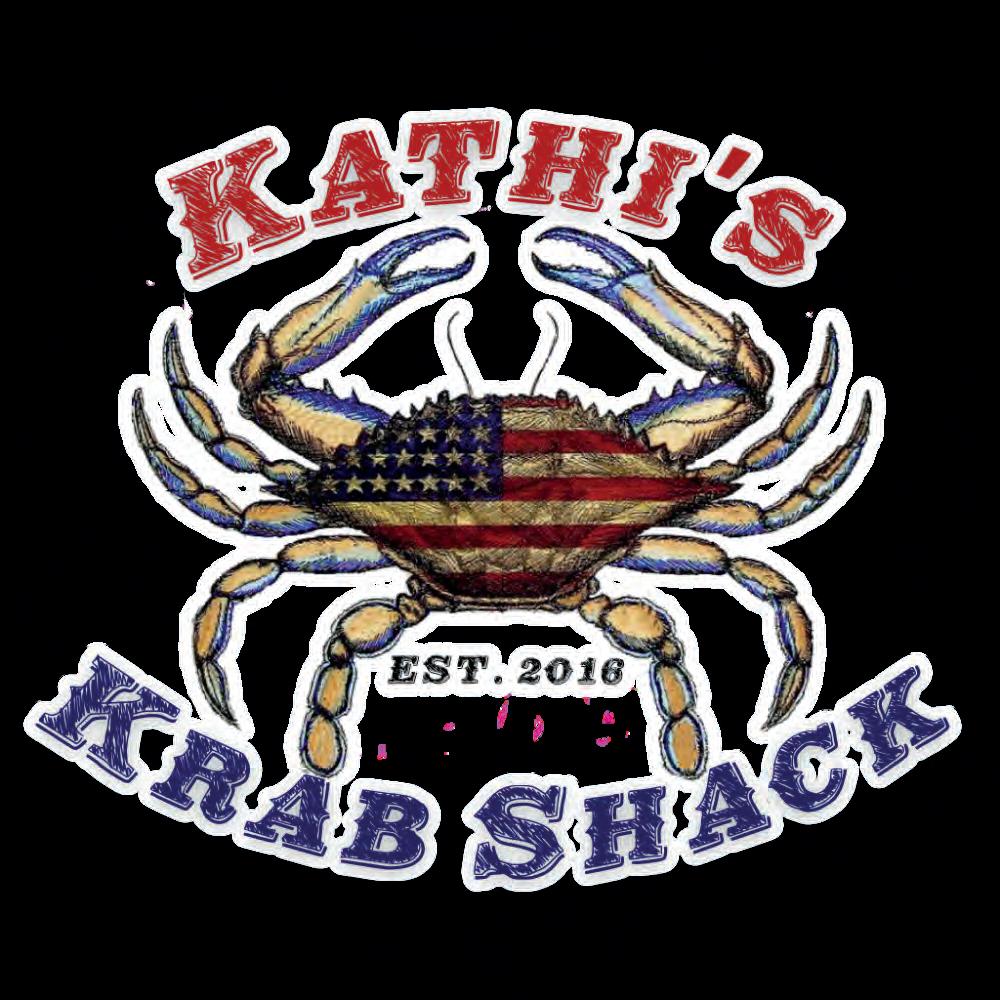
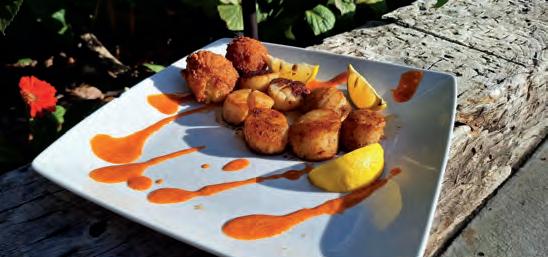















WoooHooo! Cooler air and water temps mean it is time to hit the beach, especially for doing battle with big redfish! Most of the Mullet Run is in our rear-view mirror by now, so it is time to switch up baits. Targeting oversized bruisers can be done with live mullet or chunks of dead. However, my favorite go-to bait is a half of a blue crab. The terminal tackle is easy. A fish finder rig tied out of 80-pound mono tipped with an Owner 7/0 Muti light hook will get the job done. Do not think that 80-pound mono will scare off a big redfish. I have caught several on my shark rigs. They were fish finders also but with 480-pound steel cable and 10/0 Eagle Claw L2022 circle hooks! The 80-pound mono will also help you land those-four-foot long, 25 pound bonnethead sharks that maybe still lurking around.
As long as the water stays above 64 degrees, this month will also be a big pompano month! My go-to bait is blue crab knuckles on a standard double drop/pompano rig. Since these big boys are on their
way back from North Carolina, I target them on the north side of the inlets. These Fall hot spots are the south end of Amelia, Little Talbot, Huguenot Park, Vilano, Crescent Beach and Daytona. My first pompano, over SIX pounds, was caught at Huguenot on a cold November day. My buddy Tom and I were the only ones fishing. Air temp was mid 50s and water temp was mid 60s. Get out there and get you a six pounder which will be about 22 inches to the fork!
The great thing about November surf fishing is that you can catch fish all day long, unlike in the dog days of Summer. Just remember, in the words of my mentor Larry Finch “I don’t fish in dirty water!” Find you some clean water and it is likely that you will go home with a cooler full of great groceries!
Noel Kuhn
43 years of surf fishing experience, surf fishing guide and long distance casting coach. Founding member of Florida Surf Casters club. 904-945-0660 www.TheSurfAngler.com

Watertemperatures are starting to cool down, but look for the inshore fishing to heat up. For me, the next few months are the most exciting time of year to target reds on the flats and creeks. As the water cools down, it tends to clear up, making sight-fishing possible in some of our shallow flats. (Even with all the rain we’ve had from tropical weather.) November 2023 was epic, with plenty of schooledup reds in some sight-fishable water. Let’s hope we get some more of that soon! The creek fishing should start to fire up too... The redfish will push into the shallowest areas of the creeks on the low tides to warm up and feed on small minnows and shrimp. As things cool down this time of year, you'll get to sleep in, and wait for the sun to be out for a while to warm up the water. Clearer water can mean spookier fish, so downsize your baits/lures for a stealthier approach. On extreme low tides, the redfish, trout and flounder will get schooled up in area creek holes. A live shrimp or mud minnow tossed into those holes using a 1/4oz Saltwater Assassin jighead can’t be beat. When up on the flats, look for darker mud and oyster-laden bottom to be holding redfish, trout, and flounder. These areas will warm up faster than others on sunny days; a few degrees can really make a difference. Another benefit of dropping water temps is the redfish will start schooling on the flats over the next few months. If you know where to look, you can find some big schools of tightly packed redfish. Locate these fish from a distance by looking for “muds” (discolored muddy water caused by moving fish) and/or pushing wakes
made by moving fish. Redfish singles and doubles can also be found sunning themselves in the shallows, especially along side and on top of oyster bars. These fish will be lazy, so make sure to present your bait in a slow and methodical manner. When I spot a stationary fish, I like to cast long of him and at least a few feet to either the left or right of the fish, depending on which way he's facing. Then work the bait slowly back to where the fish is. (This will help to not spook the fish.) Sometimes, they will like it moving a little faster, and sometimes a little slower. It’s always fun trying to find the right approach.
Trout fishing should turn on as it cools down as well. My favorite trout lure for this time of year is a Saltwater Assassin “Lil Boss” paddle tail in a natural color paired with a Saltwater Assassin 1/4oz jighead. The tail has a ton of thump and the trout just can’t resist it. The jig, jig, pause method works best for me. Target creek mouths, ICW banks, and any type of structure with moving water and you’ll be sure to find some trout hanging out.
Sheepshead fishing was pretty good through October and should only get better this month. Target area bridges, docks, and pilings with fiddler crabs to catch the tasty porgies. The black drum should start showing up in better numbers in the same places, as well as in the creek holes on the lower tide stage. Be sure to check out my Daily Fishing Reports online @www. InshoreAdventures.net.
Happy Thanksgiving! Capt. Tommy Derringer www.InshoreAdventures.net 904-377-3734



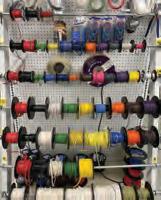
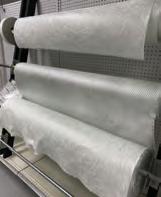
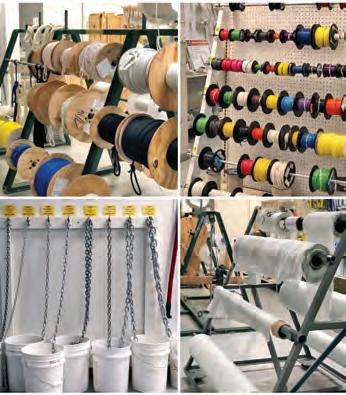
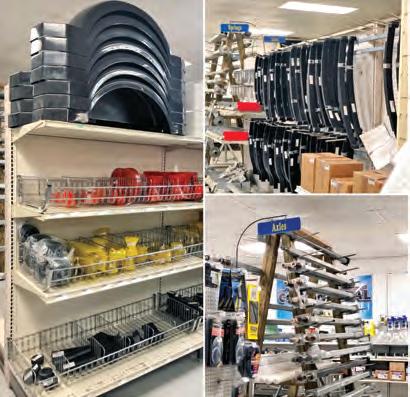




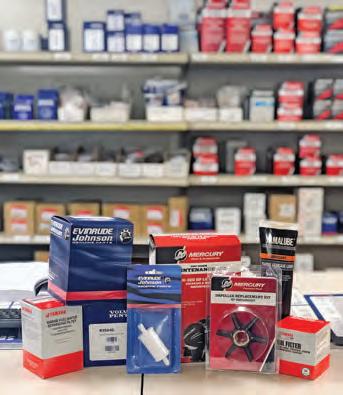








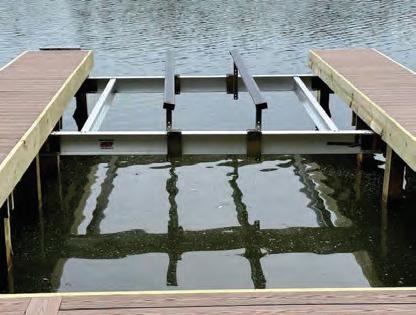
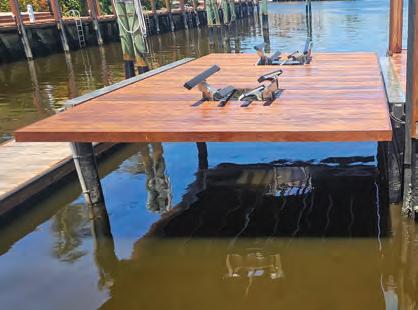



ShoreStation hydraulic boat lifts are a reliable choice for coastal residents and boating enthusiasts alike. Their strong construction, made with corrosion-resistant materials, allows them to withstand harsh environmental conditions, including sun, storms, and saltwater damage. ShoreStation provides a steadfast solution for protecting waterfront investments, ofering peace of mind to owners in the Sunshine State.
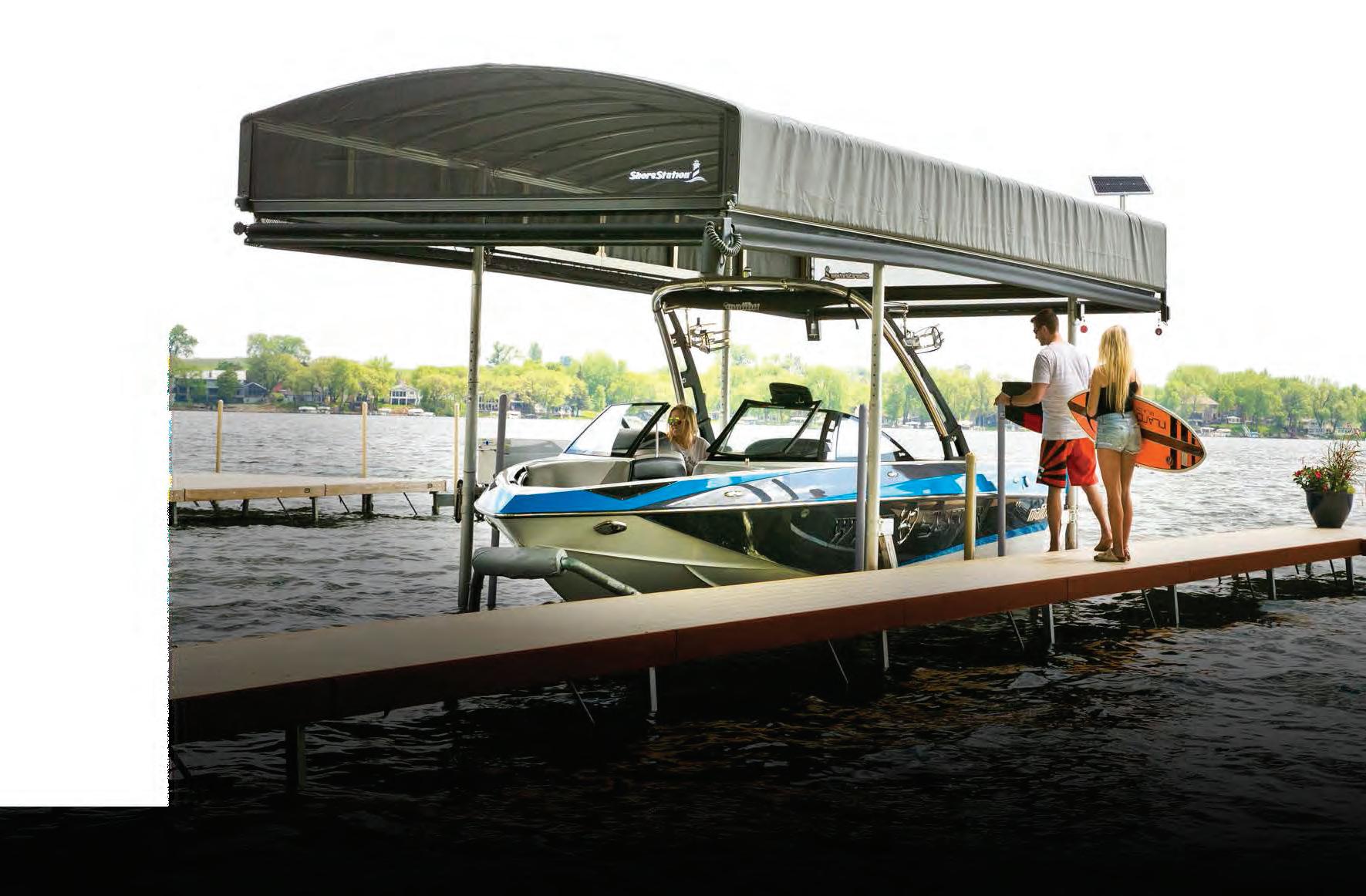

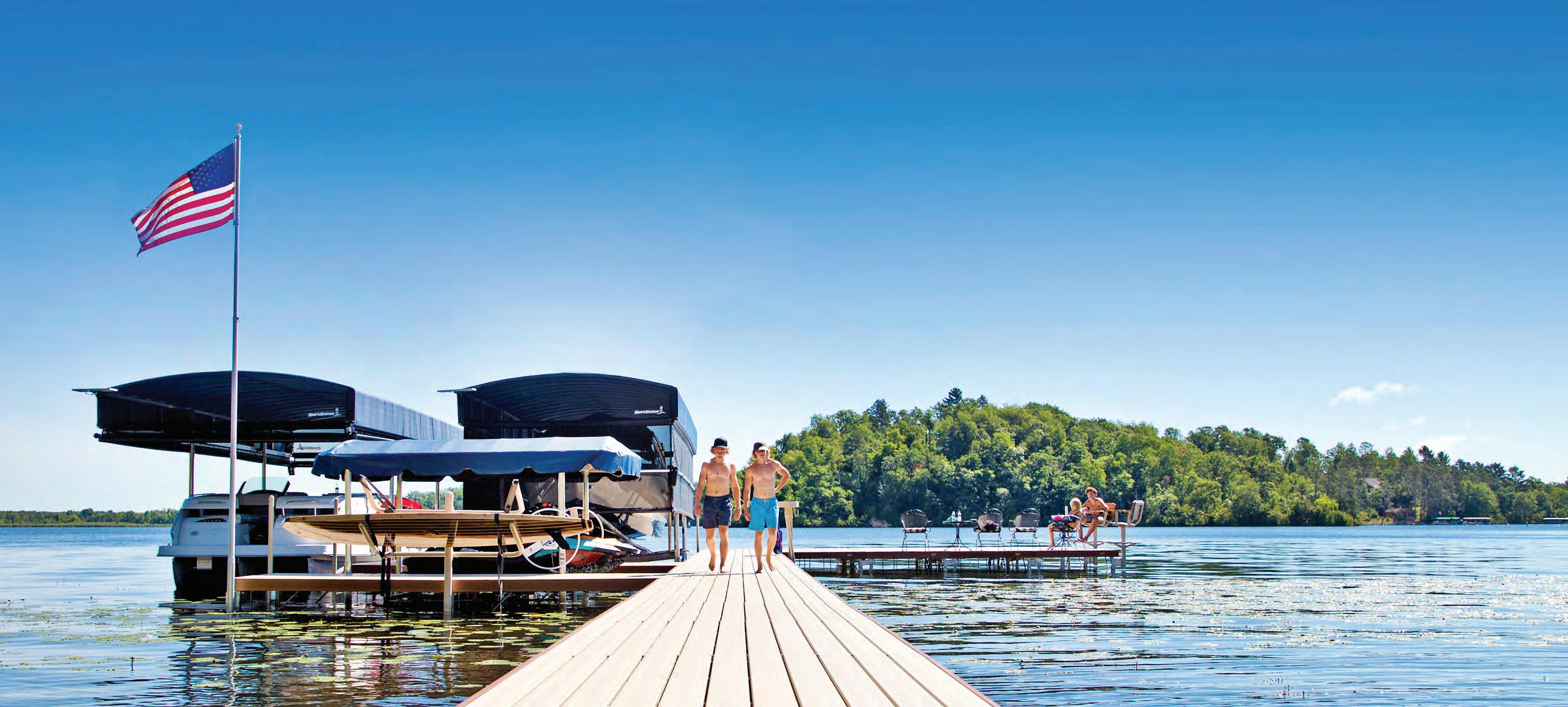



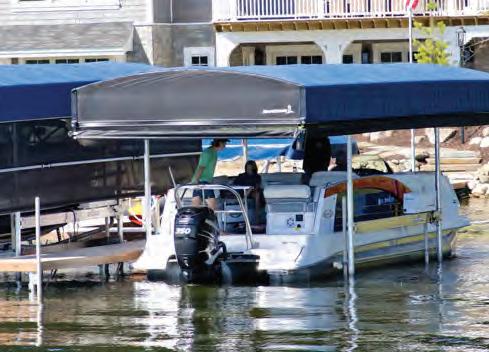

Equipped with exceptional weather resistant fabric and breathable SunTex 80 woven mesh ends for maximum protection and durability,

Made from the highest quality materials, our innovative hydraulic boat lift is one of the fastest and safest lifts on the market today. When you have a hydraulic lift, there’s no need to worry about wind and waves getting in your way. This lift will give you confdence to safely land and secure your boat in less-than-ideal conditions.
Never miss another moment on the water. Power your lift with clean, free solar power. Our speedy 20 watt charger features solar regulator drainage protection, saving your battery from permanent damage caused by overcharging.



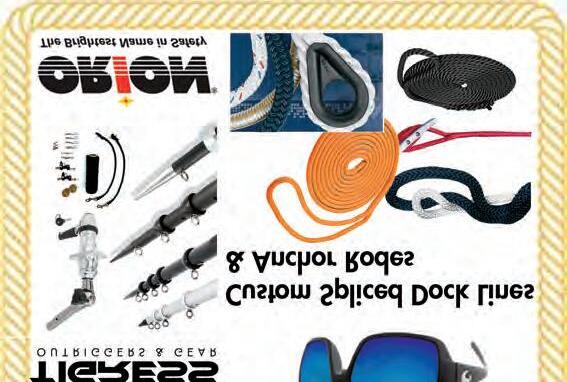
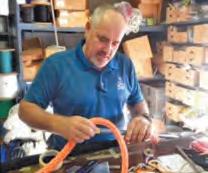


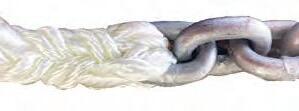


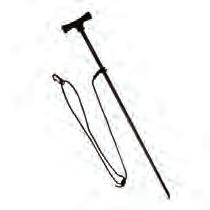








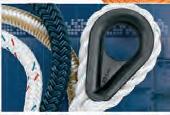

By Dr. Sal Benezo





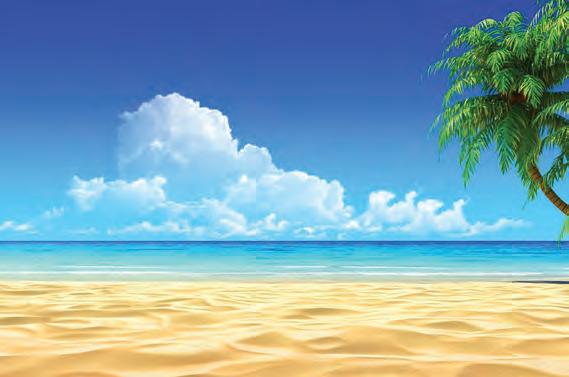
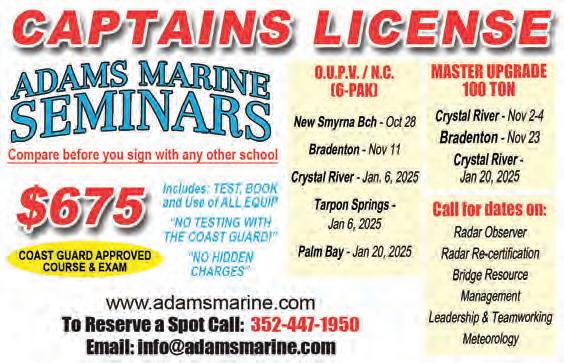
During a hurricane, fsh experience dramatic changes in their environment that can afect their behavior, habitat, and survival. As the atmospheric pressure drops with an approaching hurricane, the water pressure at diferent depths also changes. Fish have swim bladders that help regulate buoyancy, and the rapid changes in pressure can afect how they swim and maintain their depth. Some fsh may dive deeper to avoid the surface turmoil.
Hurricanes churn up sediment from the seabed, making the water murkier. Tis can reduce visibility, afecting how fsh fnd food and avoid predators. In coastal areas, this turbidity can also carry pollutants and toxins from land runof, negatively impacting the water quality.
Hurricanes generate powerful underwater currents and massive waves. Many fsh seek refuge in deeper waters, coral reefs, or underwater structures to avoid being swept away. Shallow-water fsh may struggle more to fnd shelter from the turbulence, which could lead to displacement or death.
Hurricanes ofen bring a rapid infux of fresh water from rain and runof, lowering the salinity of coastal waters. Some species, especially those adapted to certain salinity levels, may be stressed or forced to move to more stable areas. Additionally, the mixing of ocean layers can lead to changes in water temperature, which can afect fsh metabolism and spawning behaviors.
Te disturbance of the water column can disrupt oxygen levels, particularly in areas where organic matter from land washes into the ocean. Decomposing plant material can deplete oxygen in the water, creating hypoxic (low oxygen) zones, which can force fsh to fee or risk sufocation.
Fish, especially schooling species, may instinctively move to safer waters before or during a hurricane. Some species seem to sense the change in barometric pressure and migrate to deeper or more sheltered areas ahead of the storm. However, fsh that get caught in the turbulent water may end up displaced far from their usual habitat.
Afer a hurricane, habitats may be altered signifcantly. Coral reefs, seagrass beds, and mangroves—essential fsh habitats—can be damaged, leading to long-term impacts on fsh populations. However, hurricanes can also bring benefts, such as replenishing nutrients and oxygen in certain water bodies, which can stimulate plankton growth and temporarily improve food availability for fsh.
Fish have evolved to withstand many natural disturbances, including hurricanes, but the intensity and frequency of storms can have lasting efects on fsh populations, particularly for those in fragile ecosystems.



TRACY PATTERSON
Costa Rica is a renowned destination for anglers, ofering calm seas, ideal fshing conditions, and worldclass fshing. It is especially popular among female anglers due to its safety, tournaments, and supportive crews, making it an unforgettable experience.
If you’re seeking high odds of catching billfsh, Costa Rica is the place to be. On a full day ofshore, it’s common to get multiple strikes. Te fat, calm seas make it enjoyable for anglers of all levels, letting you focus on reeling in catches rather than battling rough waters.
Costa Rica hosts two ultra prestigious women-only tournaments: the Ladies Angler Tournament at Los Suenos Resort and Marina, and the Pescadora Billfsh Championship at Marina Pez Vela. Both tournaments create a supportive

yet competitive environment for anglers of all skill levels. Te Pescadora Championship is
particularly unique, ofering two Female Angler of the Year awards based on diferent fshing techniques. It encourages women to challenge themselves and grow in the sport.
Costa Rica is ranked #1 in Central America for safety, and recent laws further protect women from harassment. Female anglers can feel comfortable walking around resorts and marinas. Charter feets also adhere to strict safety regulations, ensuring peace of mind while on the water.

Whether you’re staying at a boutique hotel or a private home, Costa Rica ofers a range of accommodations for groups of all sizes. Many resorts are conveniently located near marinas, allowing easy access to fshing trips and other adventures.
Costa Rica is home to many women who support the lady angler movement. Te captains and crews are eager to teach beginners, helping them hook their frst billfsh or refne their skills. With women accounting for a growing percentage of anglers, Costa Rica ofers a welcoming and empowering environment for female anglers.
Whether you’re an experienced angler or a frst-timer, Costa Rica ofers an unbeatable fshing experience. Its exceptional conditions, tournaments, safety, and camaraderie make it the top destination for lady anglers.
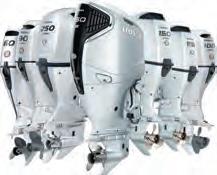

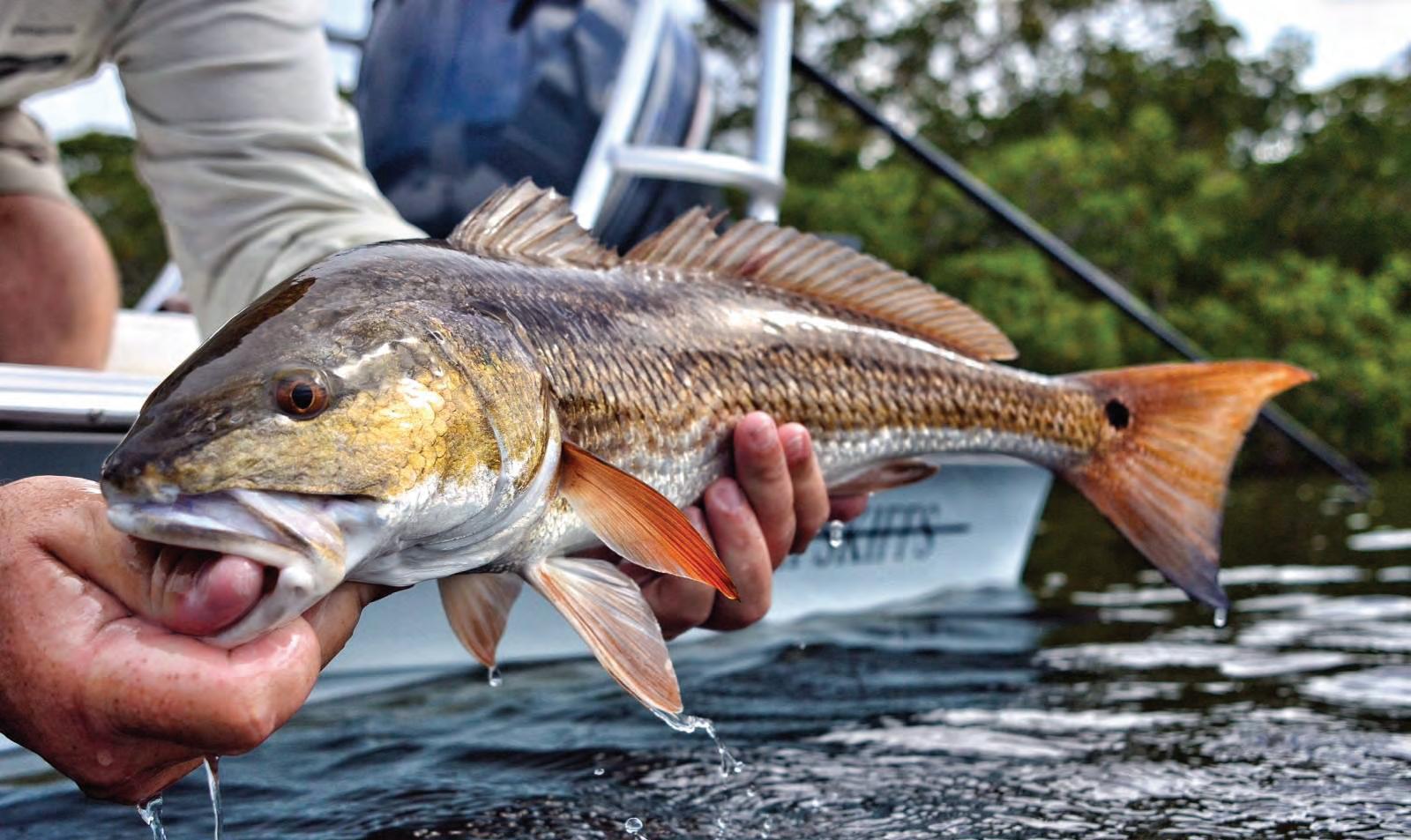



IBy Capt. Michael Okruhlik
t’s that thrilling time of the year, founder time! Te fall migration, reaching its peak in November along the Gulf Coast, promises an exciting infux of founder to their spawning grounds. Louisiana, following Texas, has also implemented a closed season during this peak run. But remember, the inability to keep fatties during this time doesn’t dampen the thrill of catching them.
Flounder will be migrating into the Gulf during this time, so the apparent ambush areas will be around passes that lead to the Gulf. Te founder will position themselves in diferent regions based on the tide level and current strength. In addition to using their burying-in-the-sand ambush technique, they also utilize structure in several ways.
First, any object that protrudes above the bottom is a great ambush point. Tis ofers a current break for forage fsh to gather directly above a buried founder, making for an easy meal. Objects such as bulkheads are also great ambush points. Flounder like to position themselves against the solid barrier and I think this can be for two separate reasons depending on what other factors are at play. As mentioned above, it could be a current break, especially if the bulkhead has a corrugated shape. When a founder settles against a bulkhead, its prey has less direction in which it can fee, allowing the founder greater odds of capturing it. When targeting founder, never pass up a bulkhead.
Secondly, founder can be caught using a variety of lures and live bait, especially if you keep it in contact with the bottom to increase your chances of a strike. When it comes to live bait, a frisky mullet is your best bet for landing a larger founder. If you’re aiming for a trophy, this is the way to go. Personally, I prefer fshing with lures, particularly the paddle tail style. Jerk-style sof plastics and bucktails can also be efective when worked in the same manner.
If I had to pick a tide to maximize my time on the water, I would choose a medium fow outgoing. Although there are no set rules that fsh always follow, I feel the founder feed more on their way out to the gulf, utilizing

the current to ease their journey. Contrary to the incoming tide, they bury themselves rather than fght against the current.
Don’t let the closed season discourage you from targeting founder during this migration; it will have its advantages. Going forward we will undoubtedly have a larger founder population, but the instant gratifcation will be a lot less trafc in our favorite founder spot! I will use the closed season to target a new personal best this season, as should you.
Capt. Michael Okruhlik is the inventor of Knockin Tail Lures® and the owner of www.MyCoastOutdoors.com.

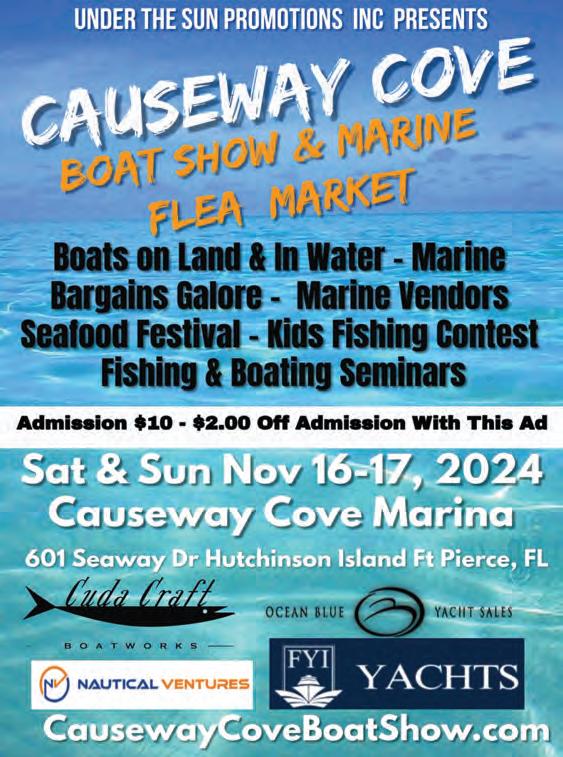

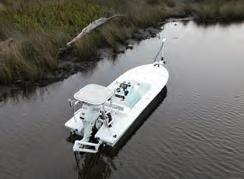
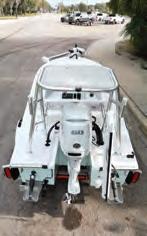






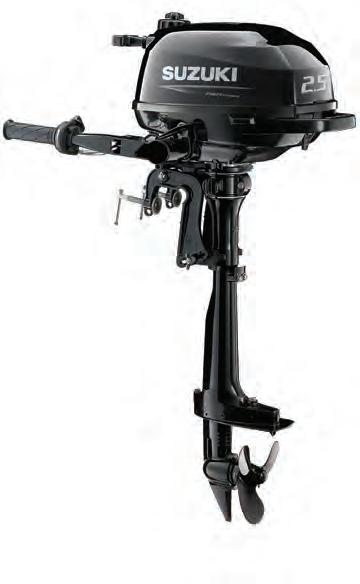

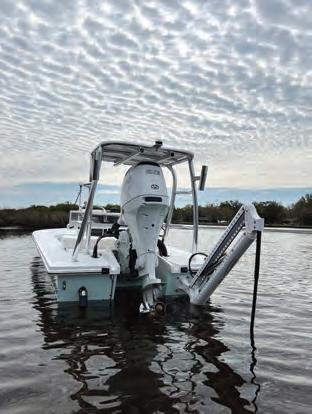

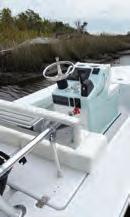

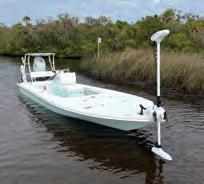


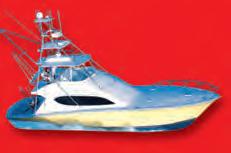


OTim Barefoot

f course, October is when it all starts, but if you like to bottom fsh, then November is the month the turbo kicks in, leading to the crescendo of the year… December. I’ve always said the week of Christmas is the apex of the grouper fshing calendar, and I’ll stand by that statement now. Tis is when larger (male) gags move inshore to establish their territory on inshore ledges, wrecks, and live bottom, much like buck deer making scrapes and rubs to mark their territory. Tese males now wait for the smaller females to show up in numbers to spawn, and the bite traditionally goes of the charts.
A small piece of hard bottom can attract large numbers of fsh if it contains the right ingredients. First and foremost, you need to locate their food. Go to the places that have traditionally held the bait—cigar minnows, sardines, beeliners, etc. “Find the bait, fnd the fsh” has been my thought process for years. Tese fsh won’t show up to a party without food—common sense. You can anchor up on a stack of bait without seeing a big mark of fsh, but afer a few bites, you’ll notice the screen light up with more and more fsh showing up.
Anchoring up is key to shallow water grouper fshing. Te sound of fsh feeding travels great distances and doesn’t go unnoticed. Once an area is fred up, constant bites supercharge the atmosphere down there. If you’re drifing, you won’t get a specifc area fred up; you’ll only go back where you got bites. But if you anchor, the fsh come to you to join in. Tis draws the alpha predators—big sharks. Yes, you’ll lose some fsh and tackle to these bruisers, but enjoy the ride while it lasts. When sharks show up, it’s time to move on to another ledge or further down the same one.

Back to noise... Keep in mind that while we hear very little, fsh hear everything. Sound travels far underwater, and everything you do on deck—slamming cooler lids, dropping hard objects, loud music, yelling—is heard by the fsh. It could be the diference between catching smaller cows or big bulls. Large male groupers didn’t get old by being dumb. You don’t kill big bucks by being noisy, so treat your fshing with the same respect.
Te folks that target grouper come home with grouper. Te ones who go “bottom fshing” with cut bait and chicken rigs come home with “bottom fsh.” As Franklin Covey said, “begin with the end in mind.” If you’re targeting grouper, think and act like it. Put baits on the bottom that avoid trash bites. Spend time jigging up some of that “trash” and drop them back down on a Decoy Jig for optimal results. Watch some of my videos on YouTube (Tim Barefoot) for examples of what I’m saying.
For more information, visit barefootcatsandtackle.com.
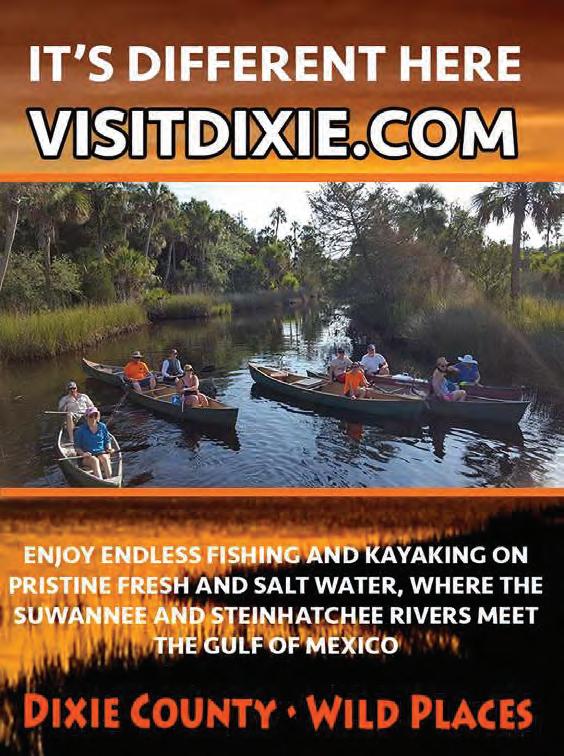




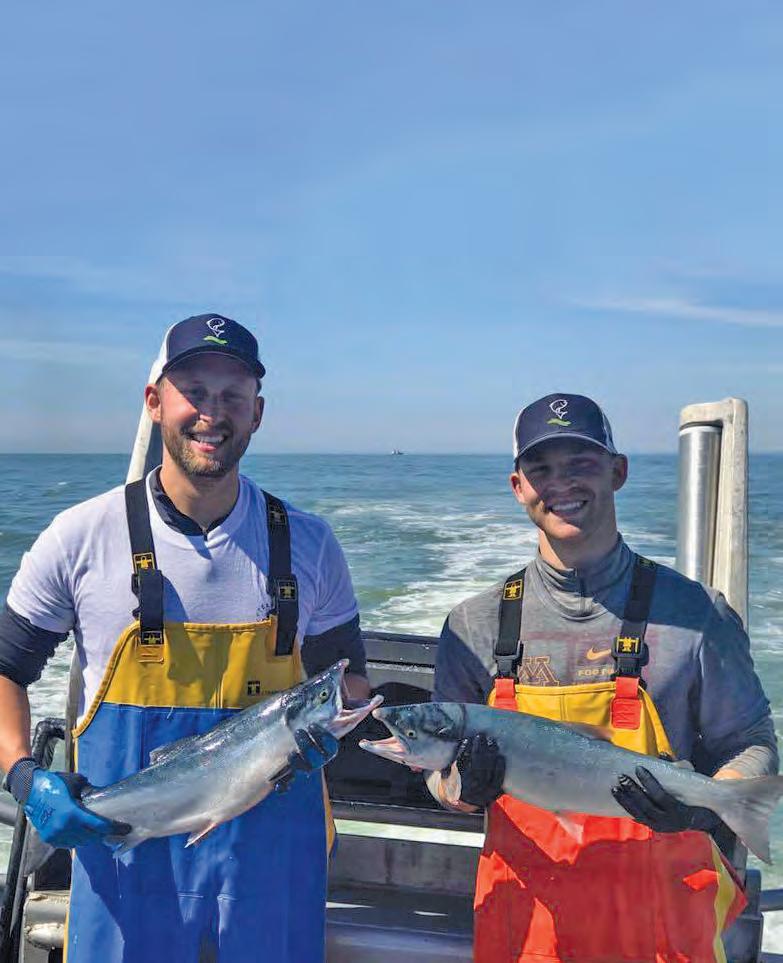



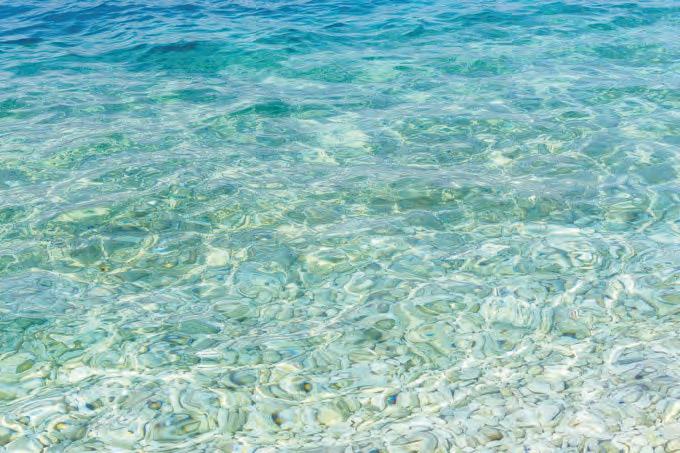






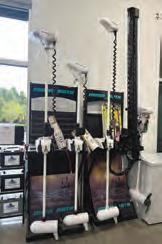
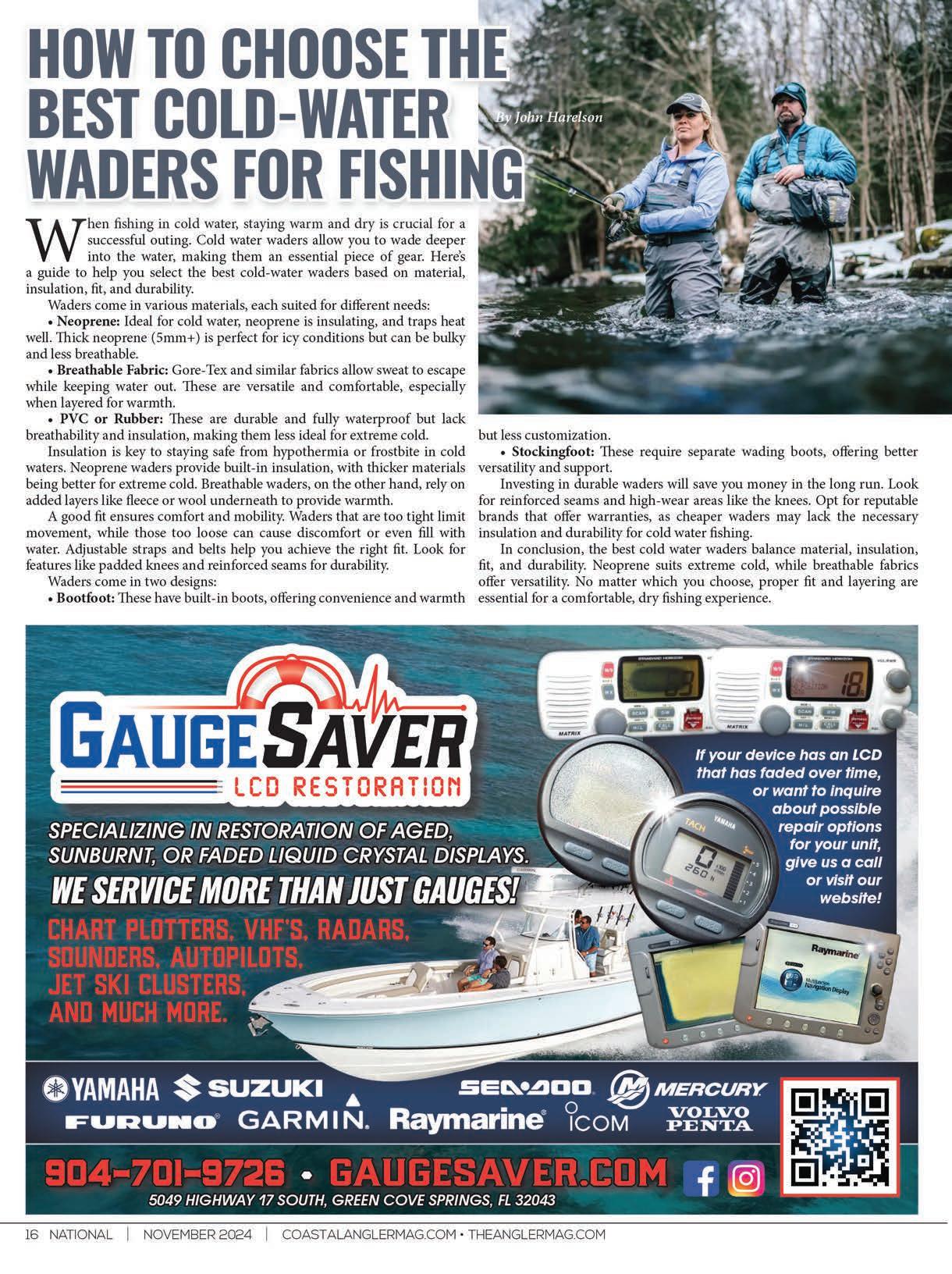



You want AI Routing! Let TZ MAPS with AI Routing make route planning a snap. Don’t take our word for it. Scan here to see for yourself how easy it is!